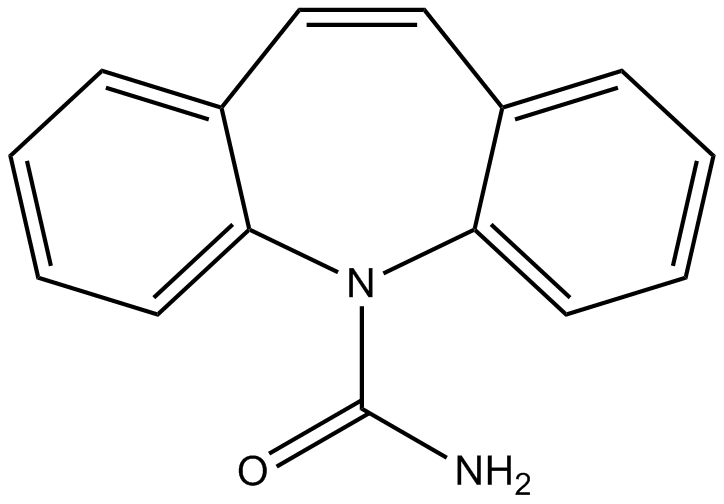Autophagy
Autophagy is a catabolic process which degrades and recycles long-lived proteins and cytoplasmic organelles through lysosome. It plays an important role in growth regulation and maintenance of homeostasis.
Products for Autophagy
- Cat.No. Product Name Information
-
GC40769
Asperphenamate
Asperphenamate is a fungal secondary metabolite originally isolated from A.
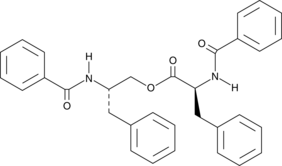
-
GC15706
Aspirin (Acetylsalicylic acid)
A non-selective, irreversible COX inhibitor
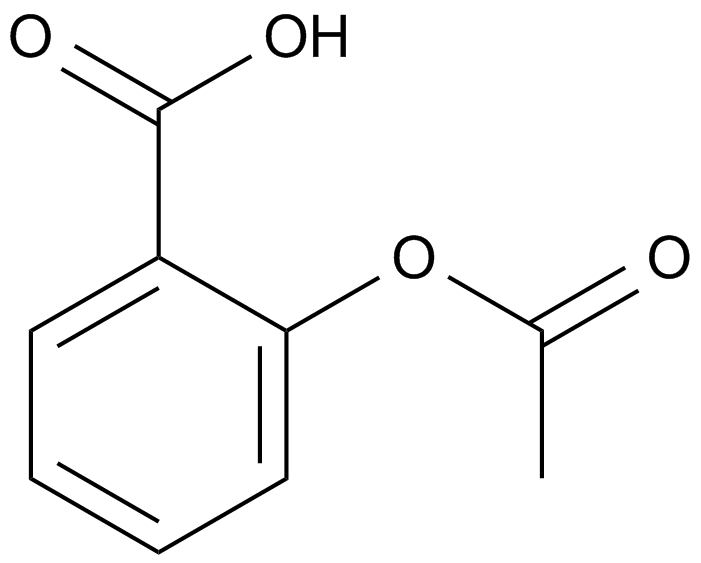
-
GC11106
AT-101
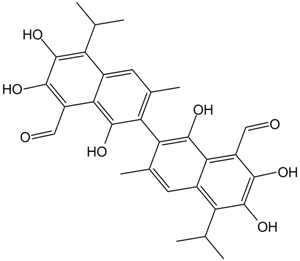
-
GC10638
AT9283
A broad spectrum kinase inhibitor
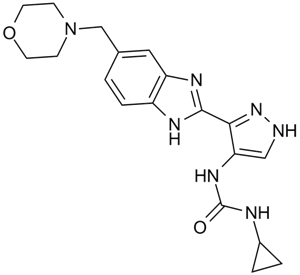
-
GC35419
Atorvastatin
Atorvastatin is an orally active HMG-CoA reductase inhibitor, has the ability to effectively decrease blood lipids.
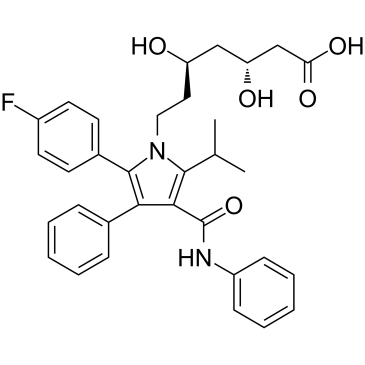
-
GC14038
Atorvastatin Calcium
An HMG-CoA reductase inhibitor
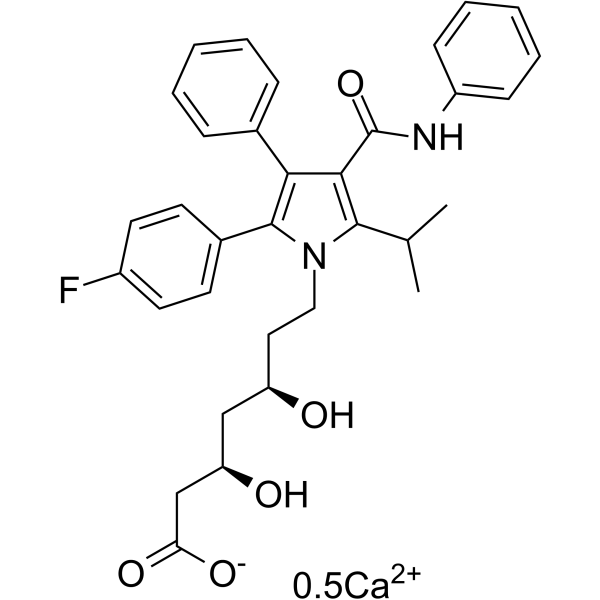
-
GC16526
Atropine
MAChRs antagonist
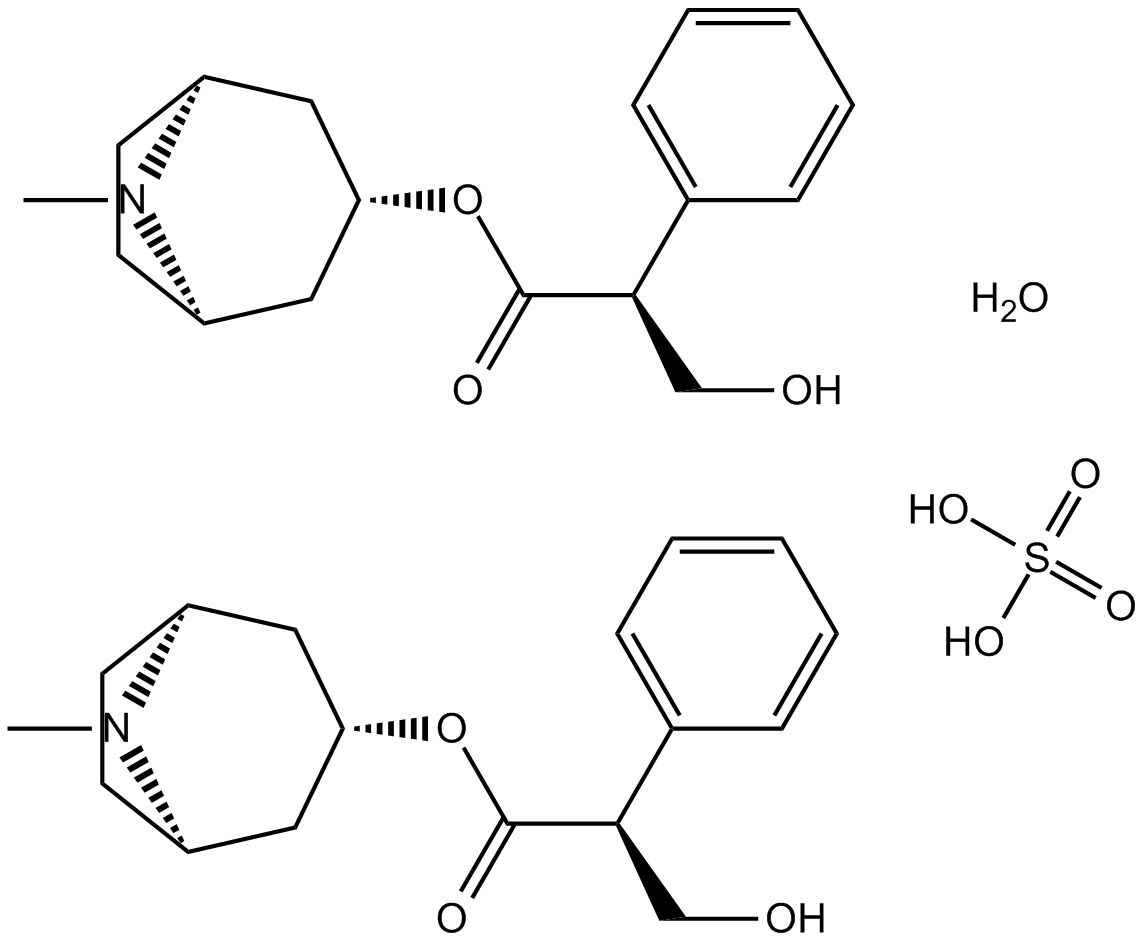
-
GC63827
Atropine sulfate monohydrate
Atropine (Tropine tropate) sulfate monohydrate is a broad-spectrum and competitive muscarinic acetylcholine receptor (mAChR) antagonist with anti-myopia effect.
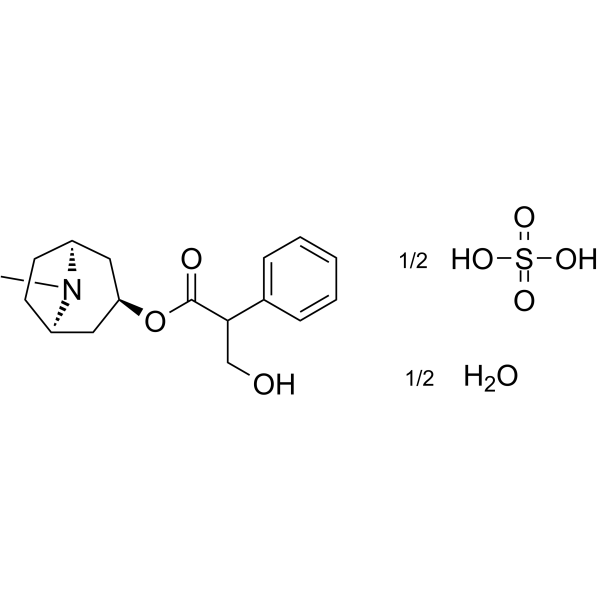
-
GC62853
Aumitin
Aumitin is a diaminopyrimidine-based autophagy inhibitor which inhibits mitochondrial respiration by targeting complex I.
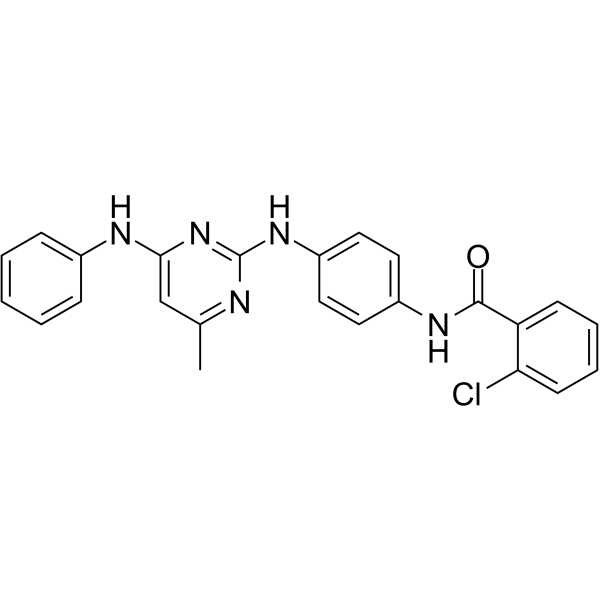
-
GC46897
AUTEN-99
AUTEN-99 (hydrobromide) is a novel inhibitor of the myotubularin phosphatase Jumpy (also called MTMR14).

-
GC33683
Autocamtide 2 (Autocamtide II)
Autocamtide 2 (Autocamtide II) is a highly selective peptide substrate of calcium/calmodulin-dependent protein kinase II (CaMKII).
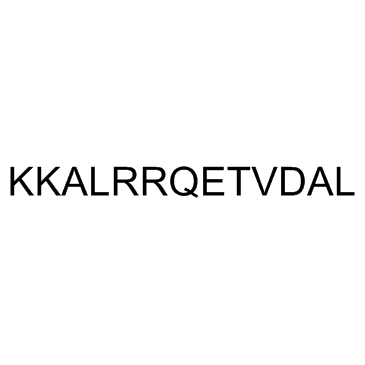
-
GC34390
Autocamtide 2, amide
Autocamtide 2, amide is a substrate (100 μM final concentration) for CaMK family assays.
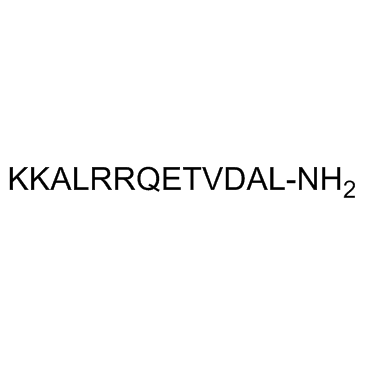
-
GC35432
Autocamtide-2-related inhibitory peptide (TFA)
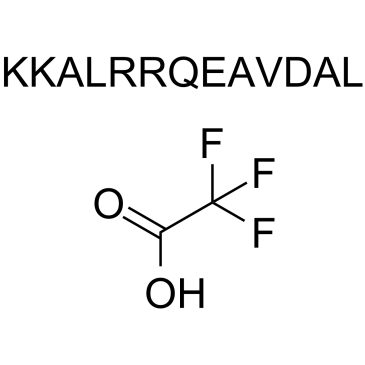
-
GC50305
Autocamtide-2-related inhibitory peptide, myristoylated
CaM kinase II inhibitor; enhanced cell permeable derivative of Autocamtide-2-related inhibitory peptide

-
GC35433
Autogramin-1
Autogramin-1 potently inhibits autophagy induced by either starvation (IC50=0.17 μM) or mTORC1 inhibition (Rapamycin; IC50=0.44 μM).
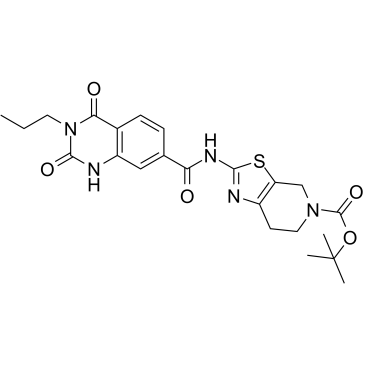
-
GC35434
Autogramin-2
Autogramin-2 potently inhibits autophagy induced by either starvation (IC50=0.27 μM) or mTORC1 inhibition (Rapamycin; IC50=0.14 μM).
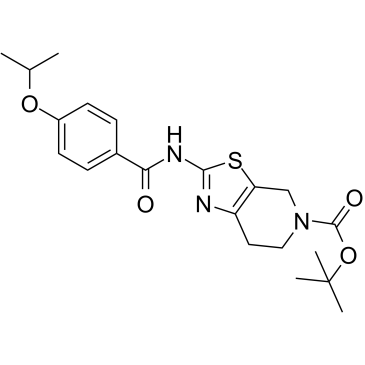
-
GC19453
Autophinib
Autophinib is a potent autophagy inhibitor

-
GC15295
AUY922 (NVP-AUY922)
An Hsp90 inhibitor
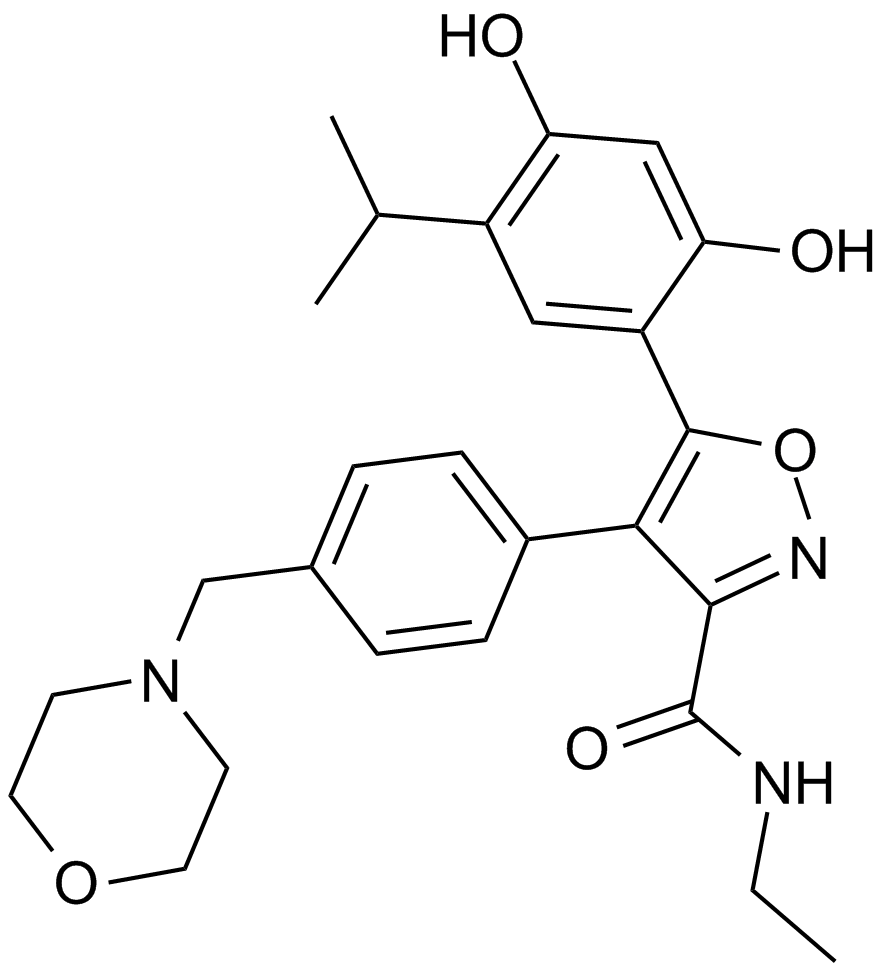
-
GC11081
Avermectin B1
An insecticide and anthelmintic
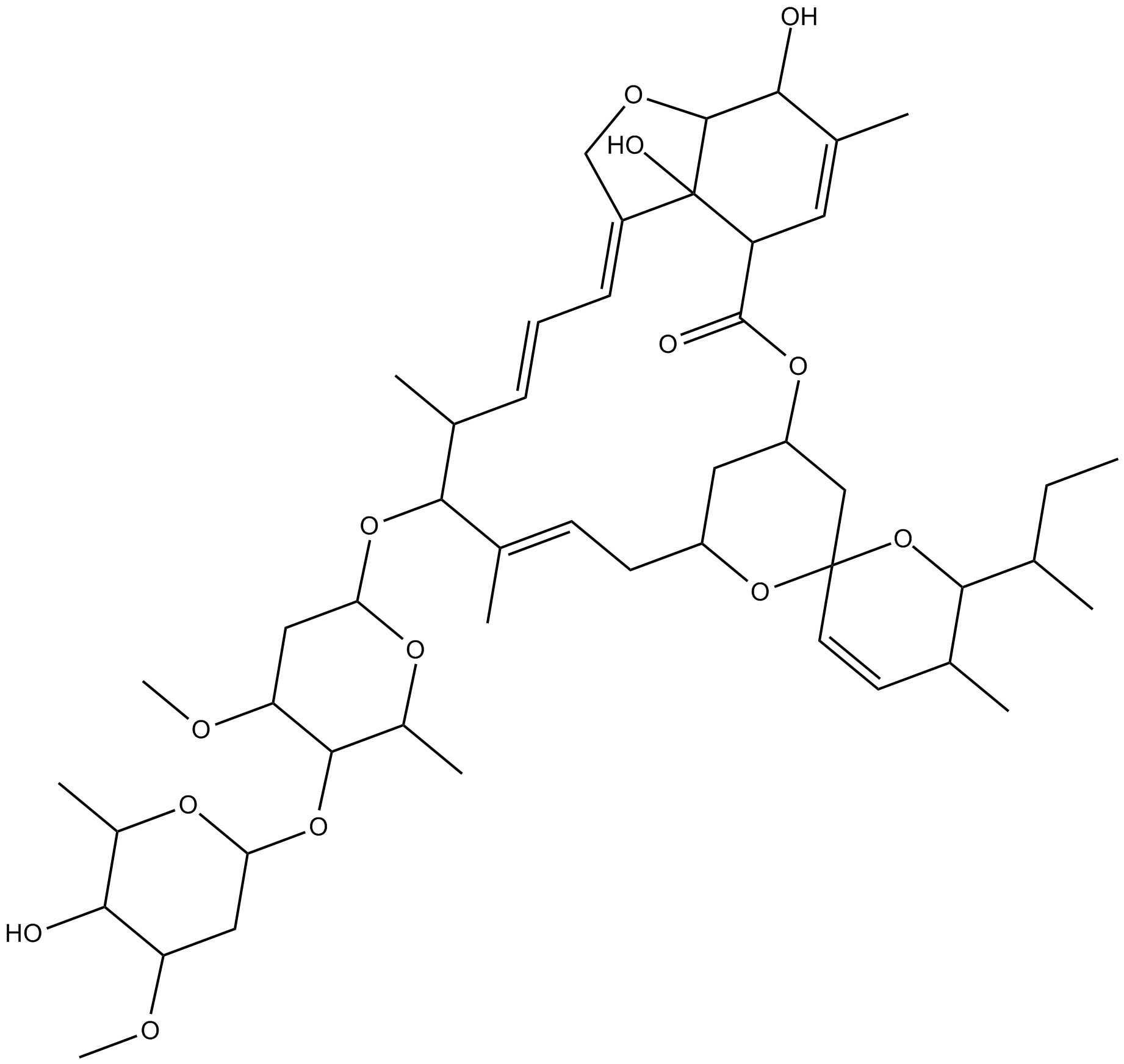
-
GC19479
AZ304
A dual inhibitor

-
GC35445
Azathramycin
Azathramycin (Azaerythromycin A) is an antibiotic and targets ribosome.
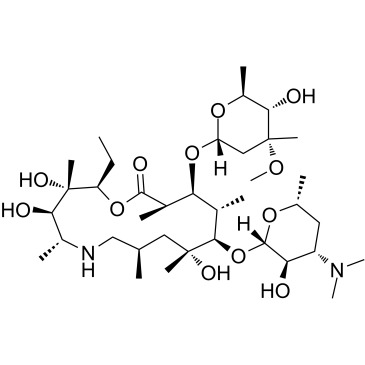
-
GC14189
AZD-3463
ALK/IGF1R inhibitor
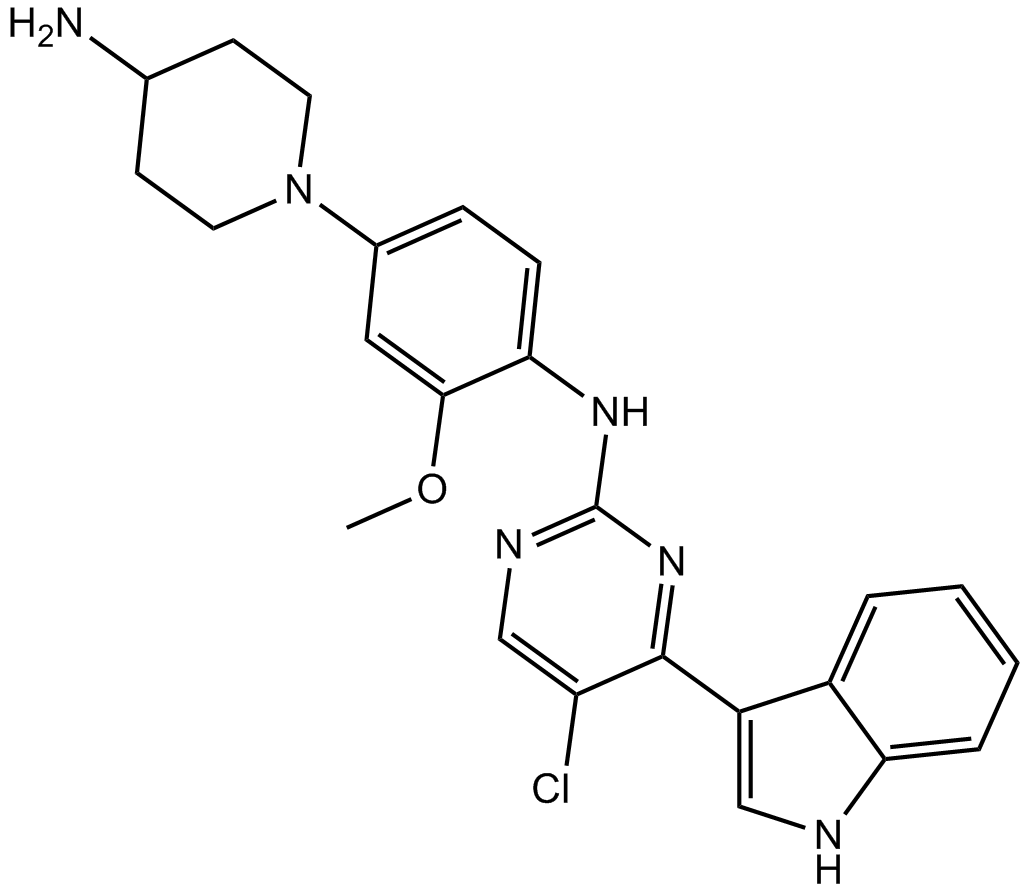
-
GC12660
AZD1208
A pan-Pim kinase inhibitor
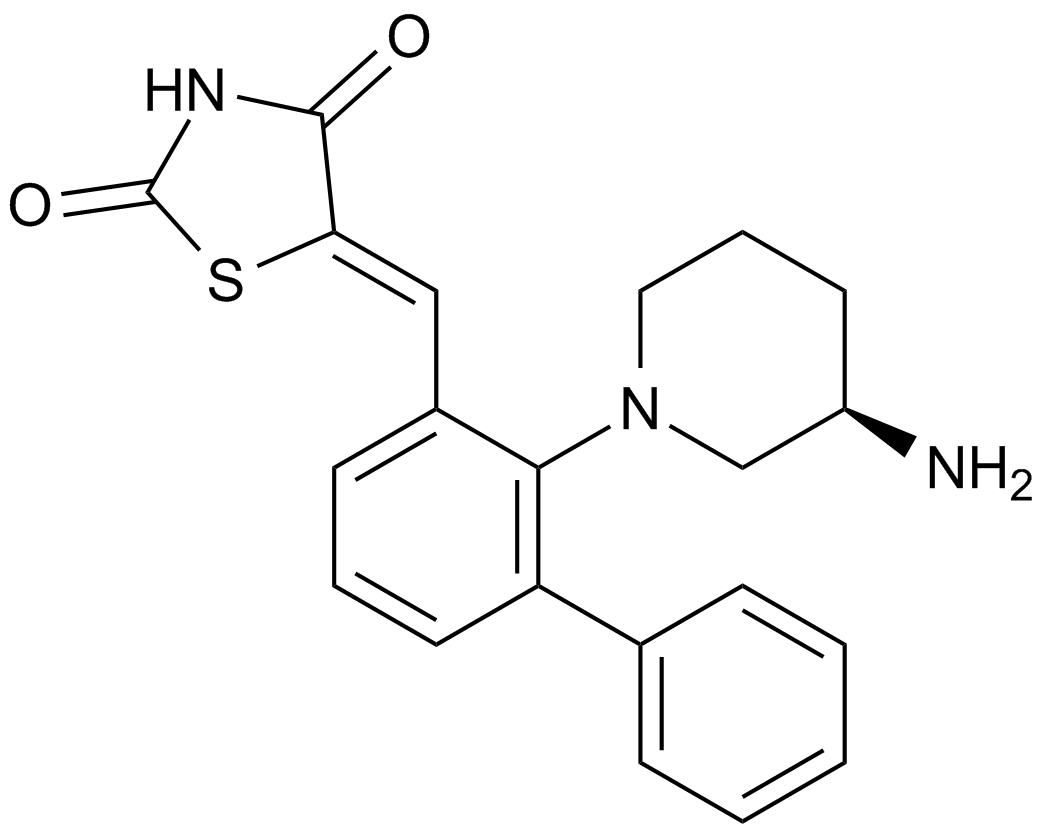
-
GC13029
AZD2014
AZD2014 (AZD2014) is an ATP competitive mTOR inhibitor with an IC50 of 2.81 nM. AZD2014 inhibits both mTORC1 and mTORC2 complexes.
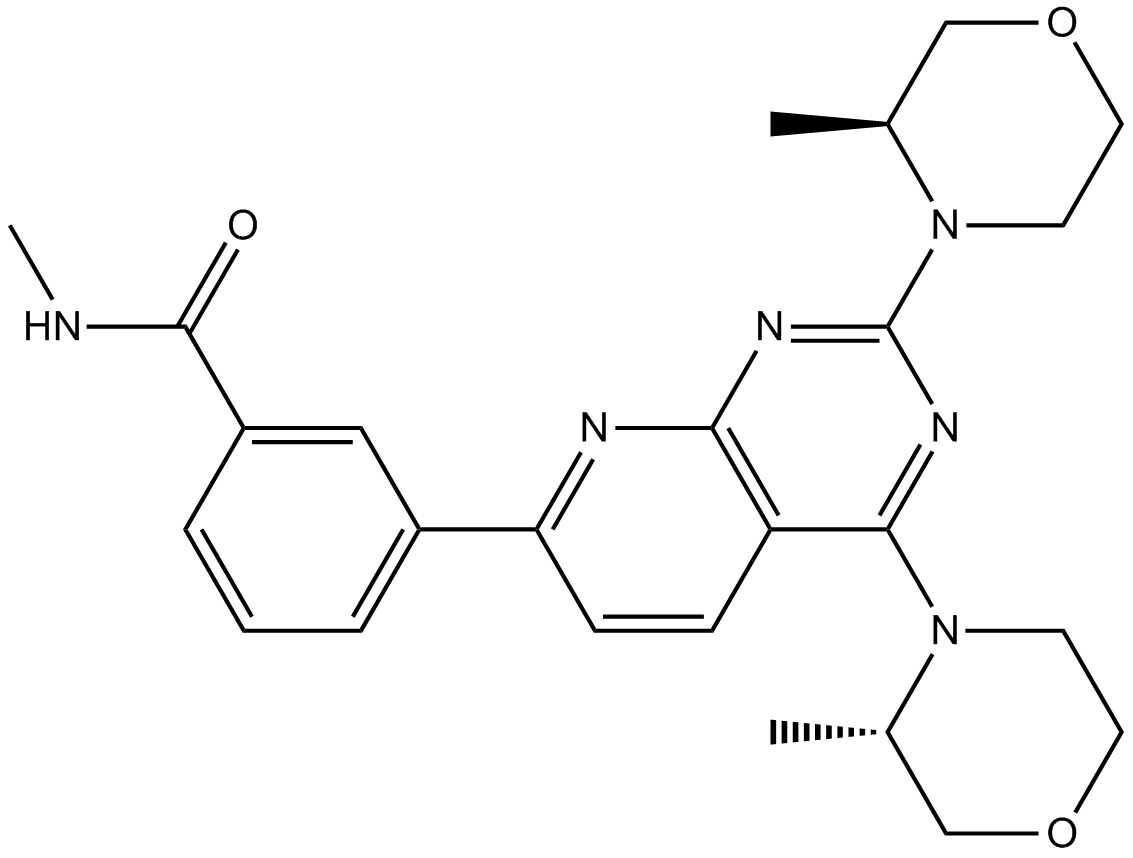
-
GC11752
AZD5363
AZD5363 (AZD5363) is an orally active and potent pan-AKT kinase inhibitor with IC50 of 3, 7 and 7 nM for Akt1,Akt2 and Akt3, respectively.
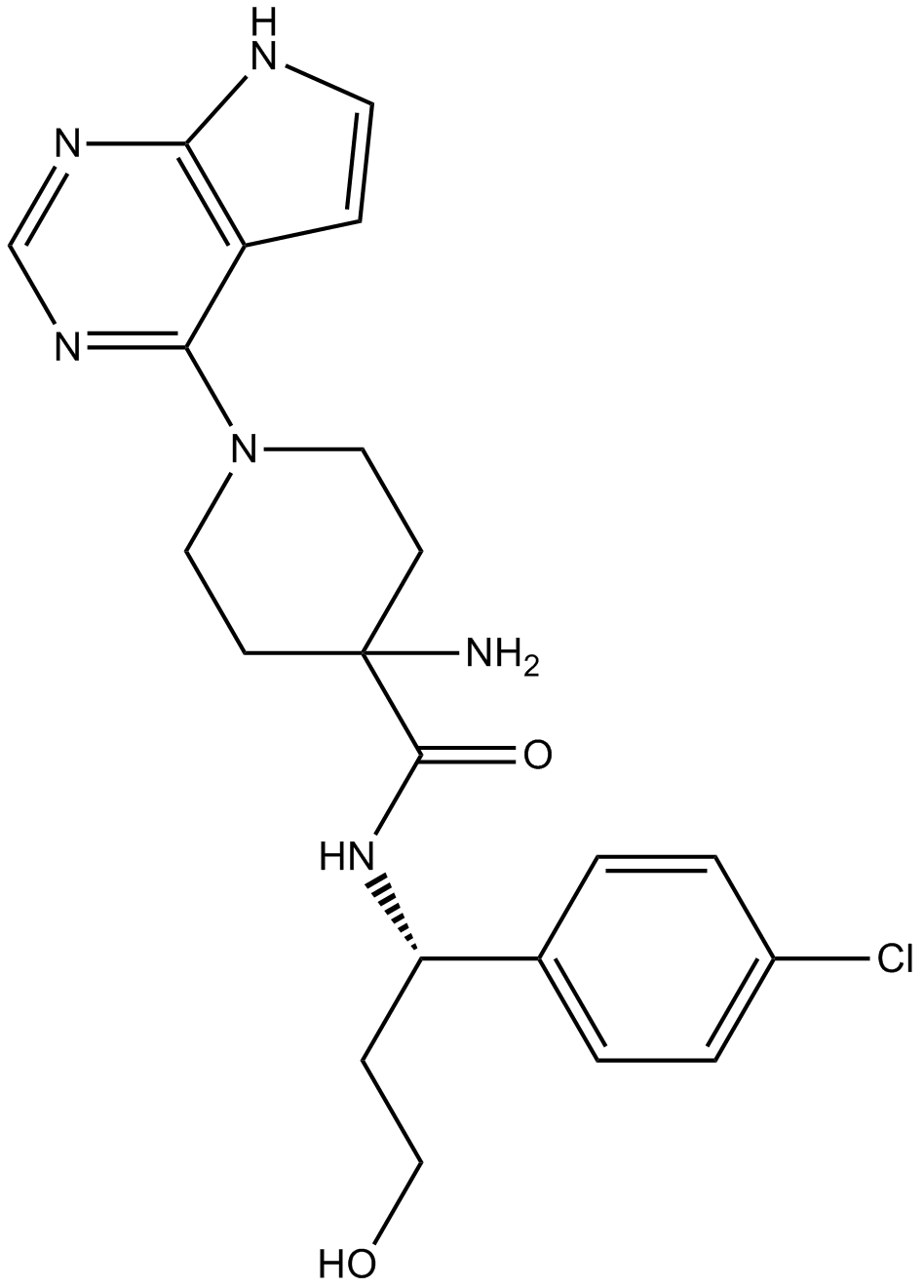
-
GC16851
AZD6482
PI3Kβ inhibitor,potent and selective
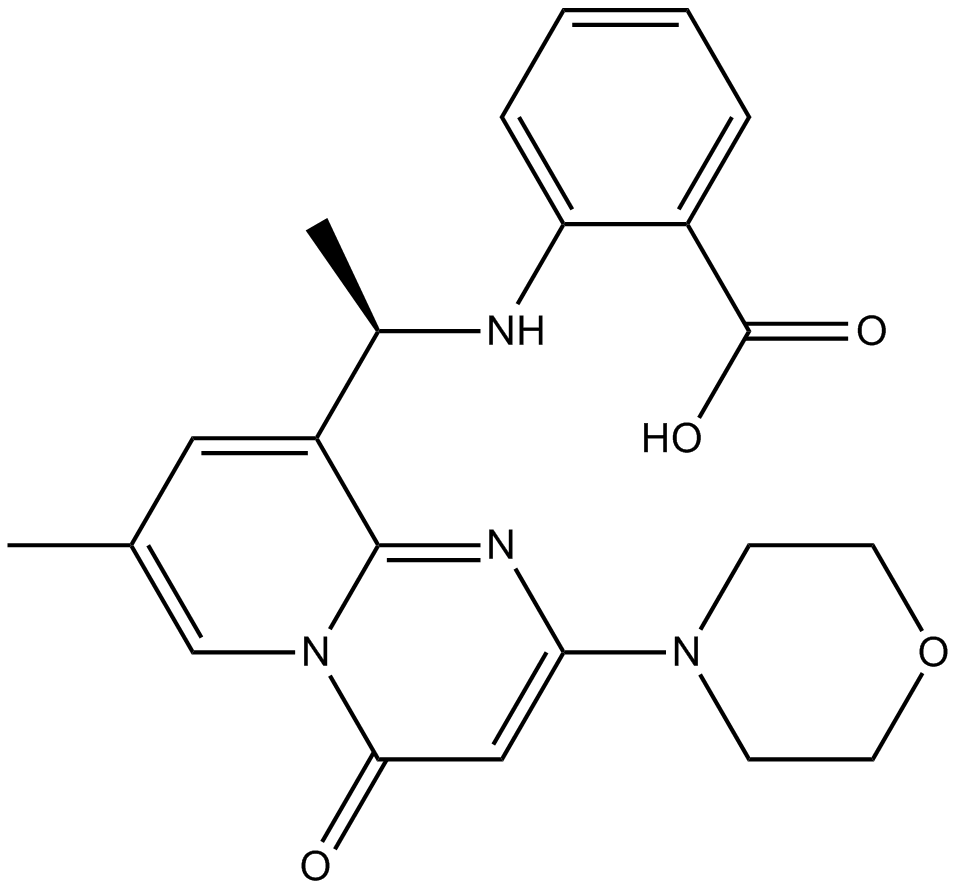
-
GC31924
AZD7624
AZD7624 is an inhaled p38 inhibitor, with potent anti-inflammatory activity.
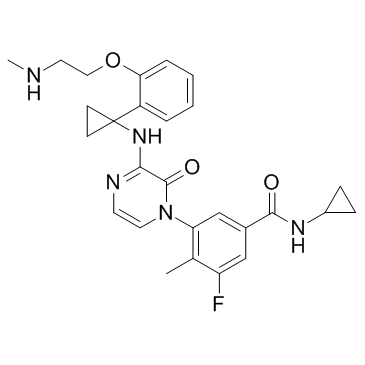
-
GC16380
AZD8055
AZD8055 is a new ATP-competitive mTOR inhibitor with an IC50 of 0.8 nmol/L and a Ki of 1.3 nmol/L.
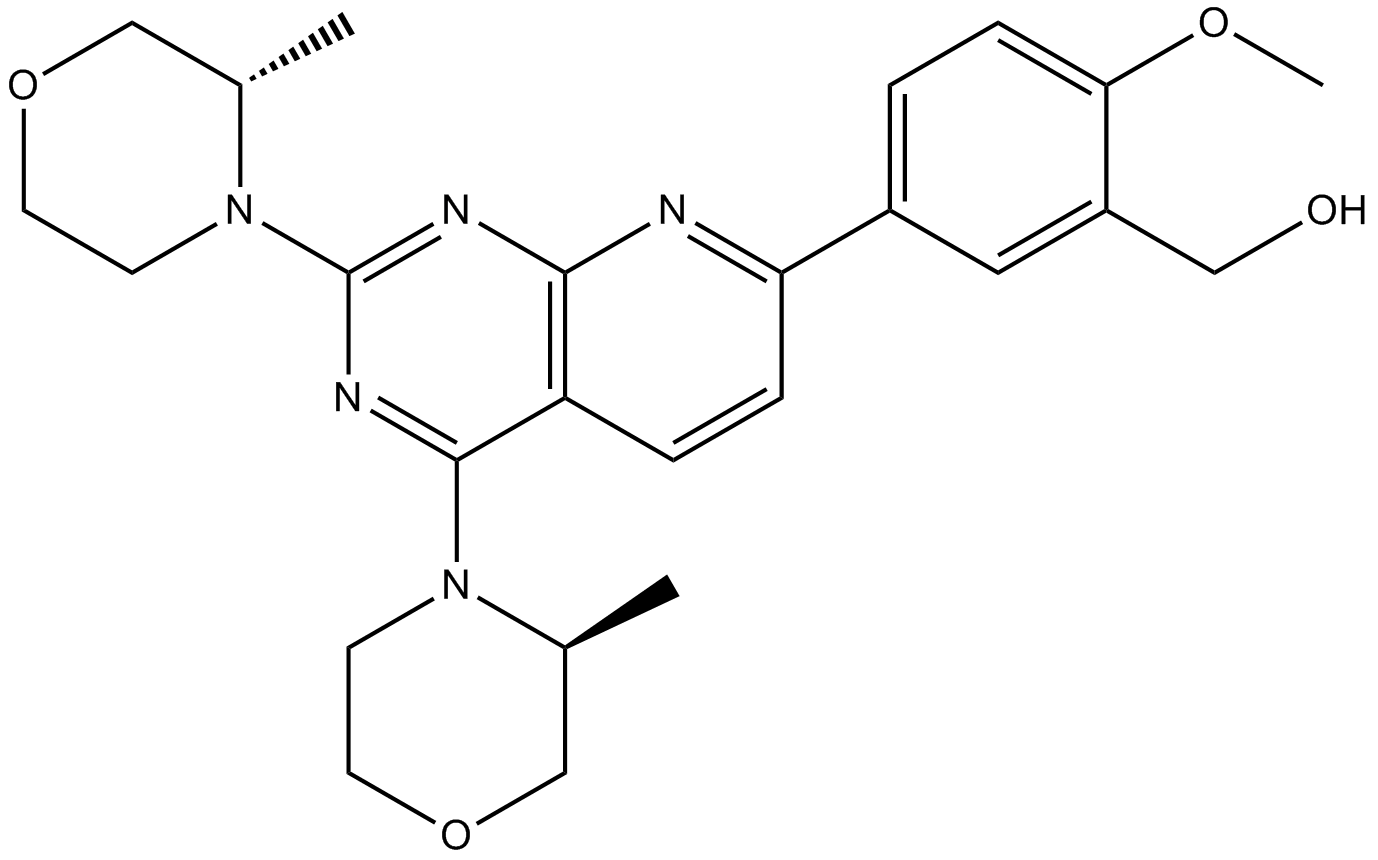
-
GC14507
Azithromycin
Antibiotic by inhibiting protein synthesis

-
GC11304
Azithromycin Dihydrate
Azithromycin Dihydrate is a macrolide antibiotic useful for the treatment of a number of bacterial infections.
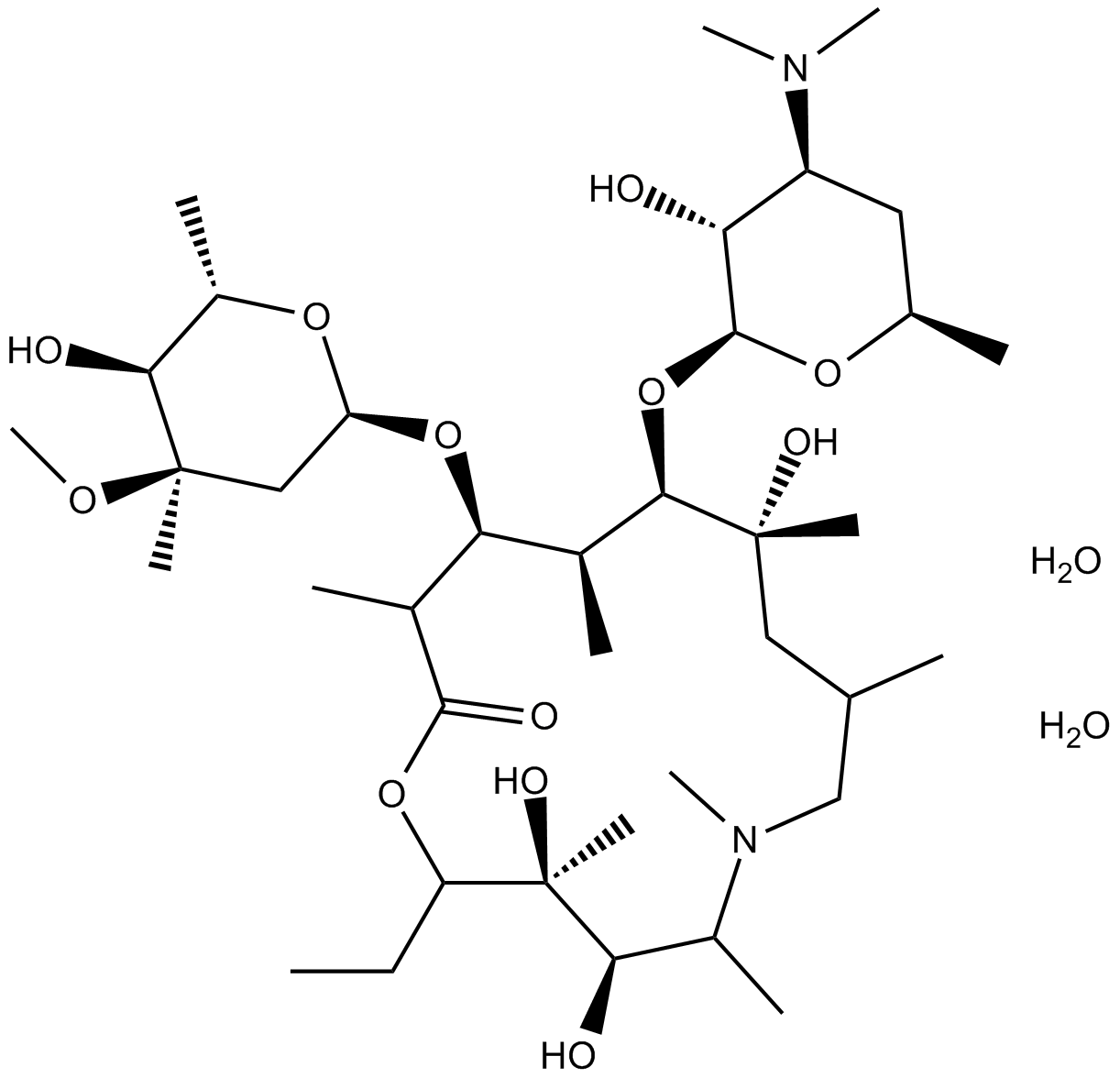
-
GC35462
Bafetinib
Bcr-Abl/Lyn tyrosine kinase inhibitor
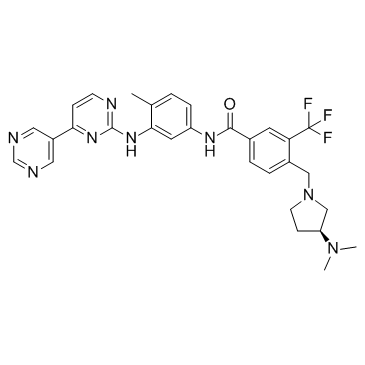
-
GC17597
Bafilomycin A1
Bafilomycin A1, a macrolide antibiotic isolated from the Streptomyces species, is an inhibitor of vacuolar H ATPase (V-ATPase).
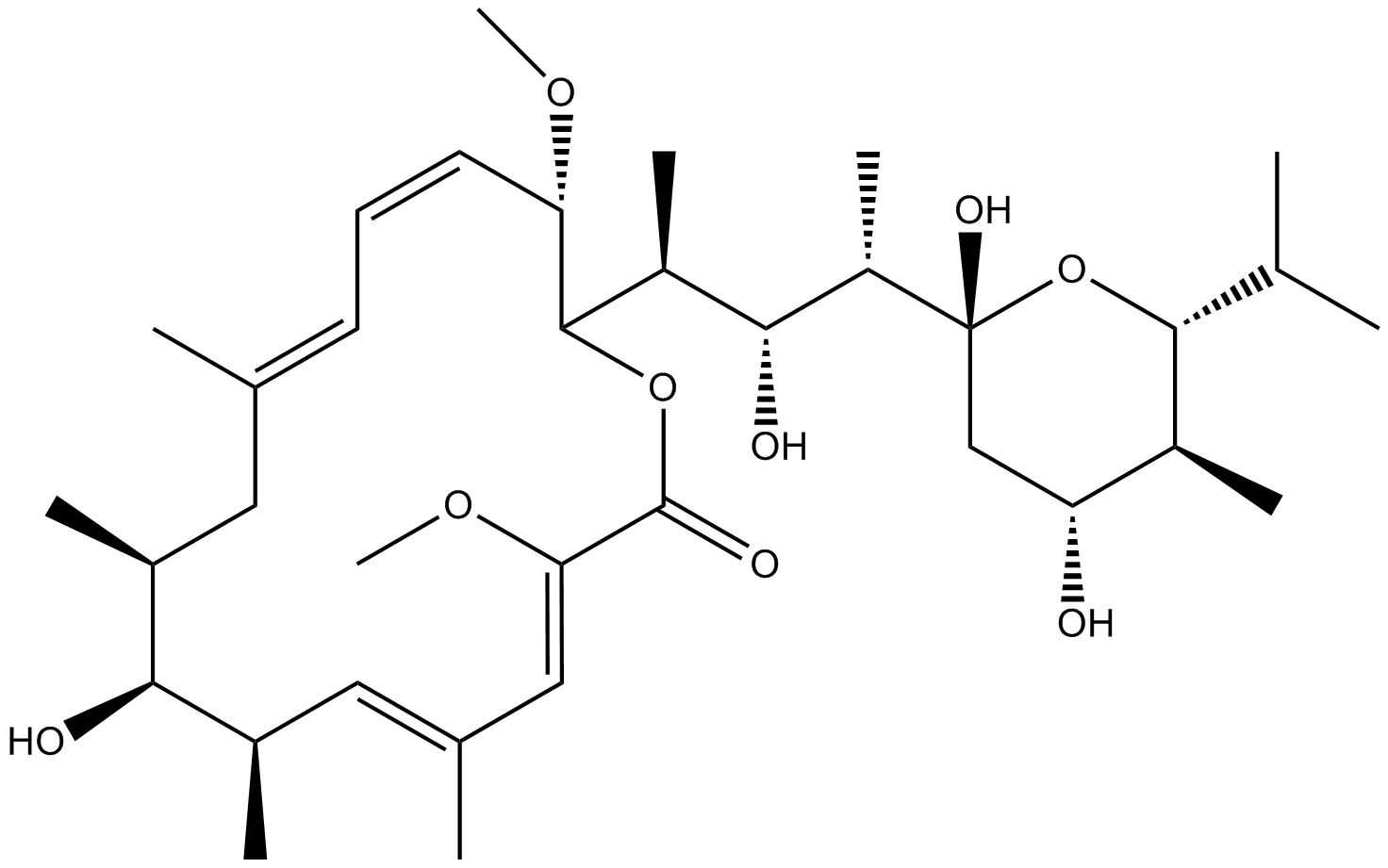
-
GN10018
Baicalin
A flavonoid with diverse biological activities
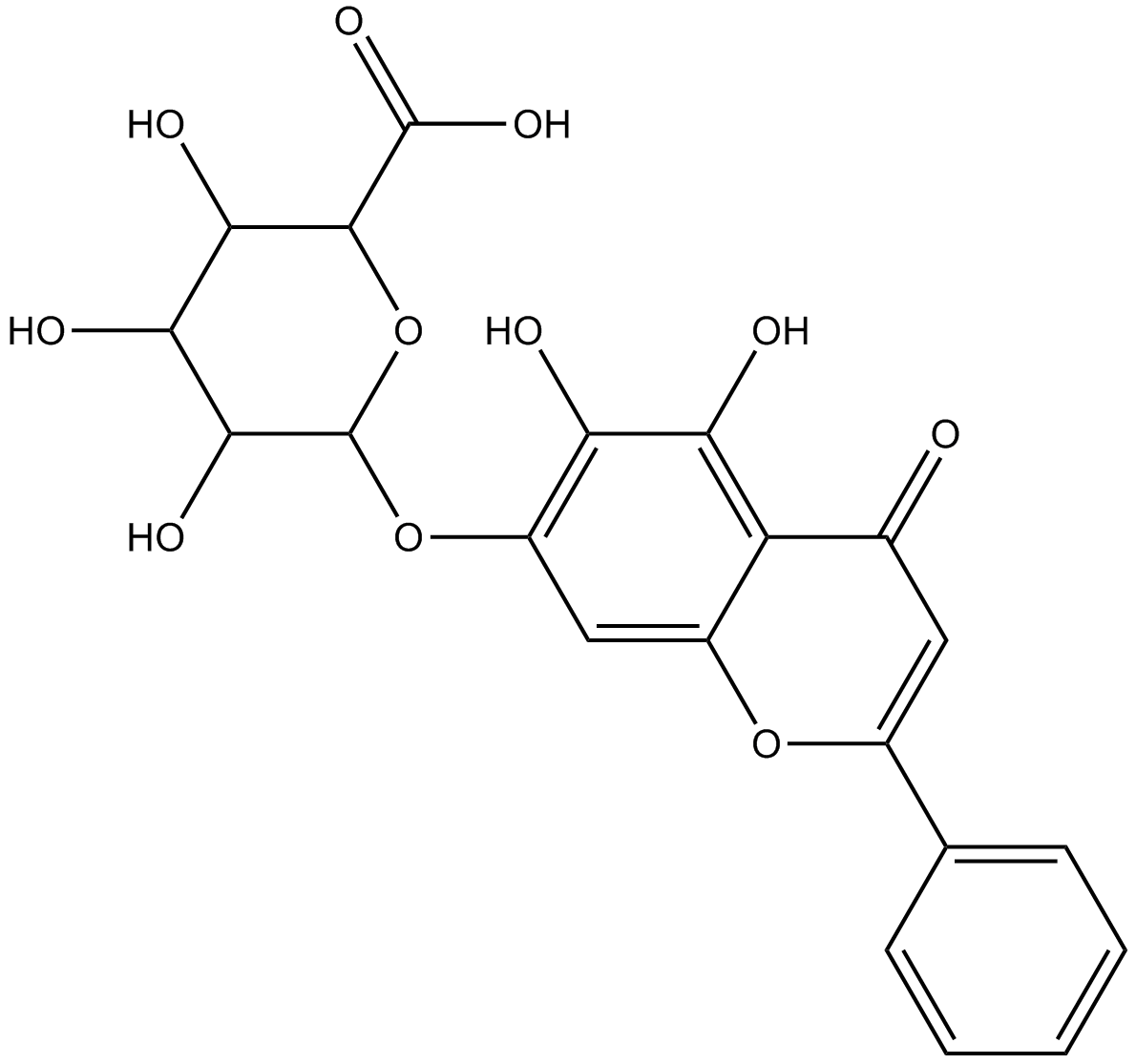
-
GN10590
Bakuchiol
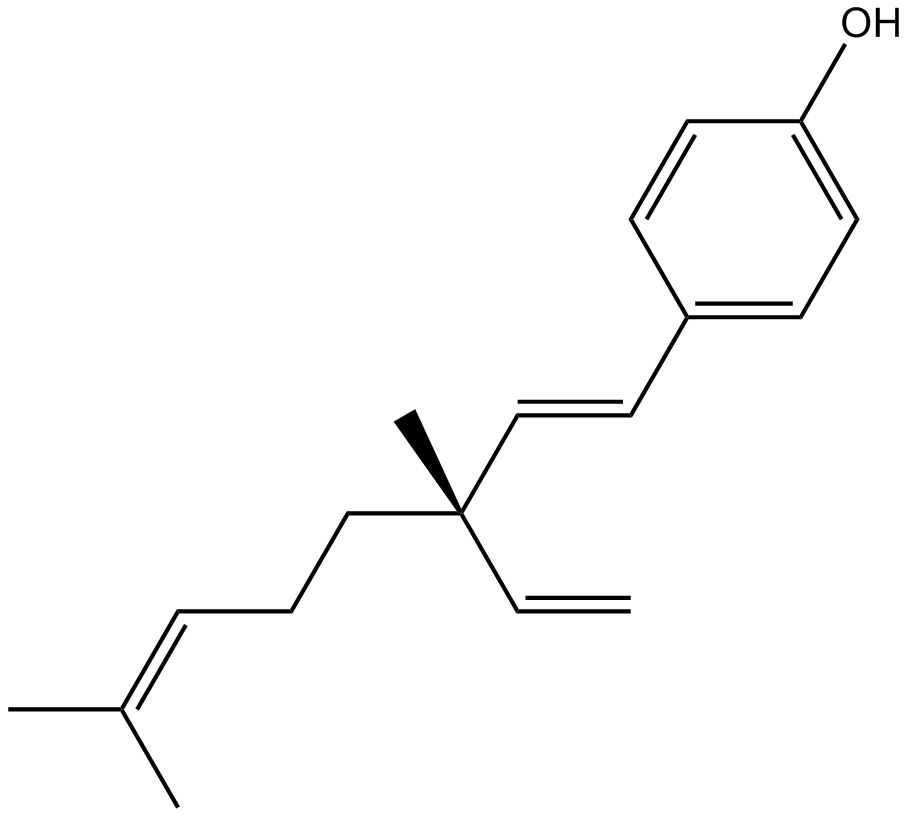
-
GC30565
BAR502
A dual agonist of GP-BAR1 and FXR
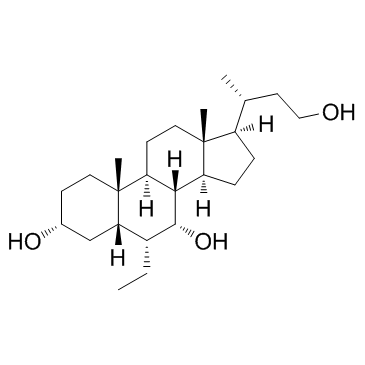
-
GC11572
Bardoxolone methyl
A synthetic triterpenoid with potent anticancer and antidiabetic activity
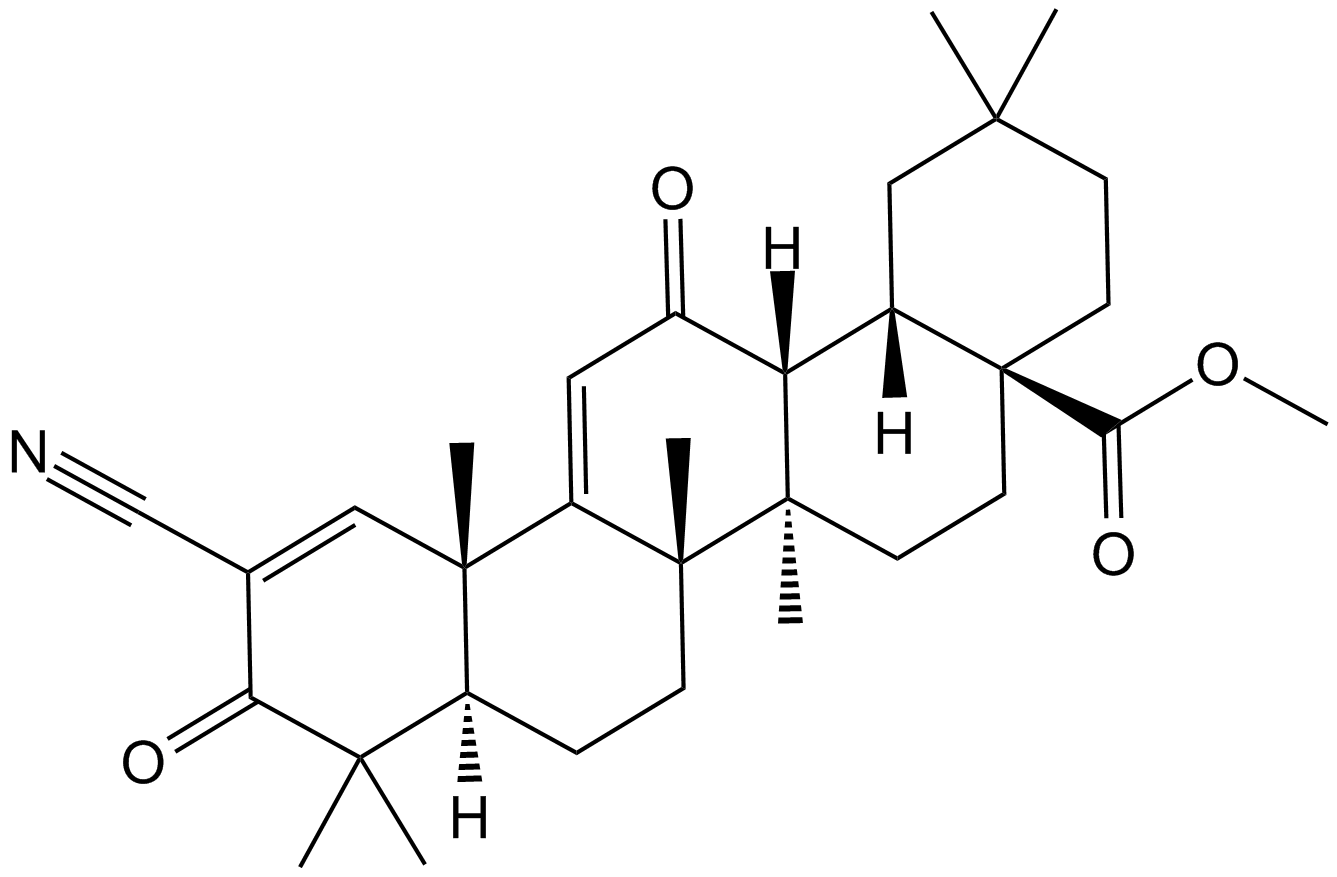
-
GC13035
Bay 11-7821
A selective and irreversible NF-κB inhibitor
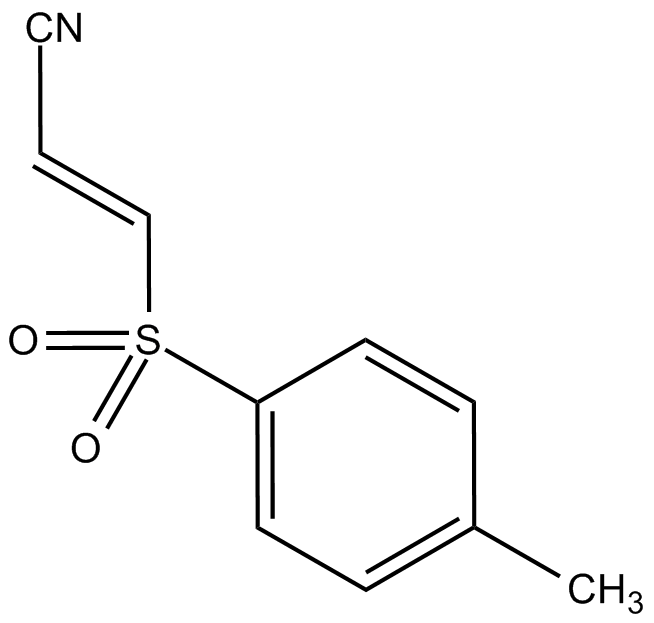
-
GN10443
Berbamine
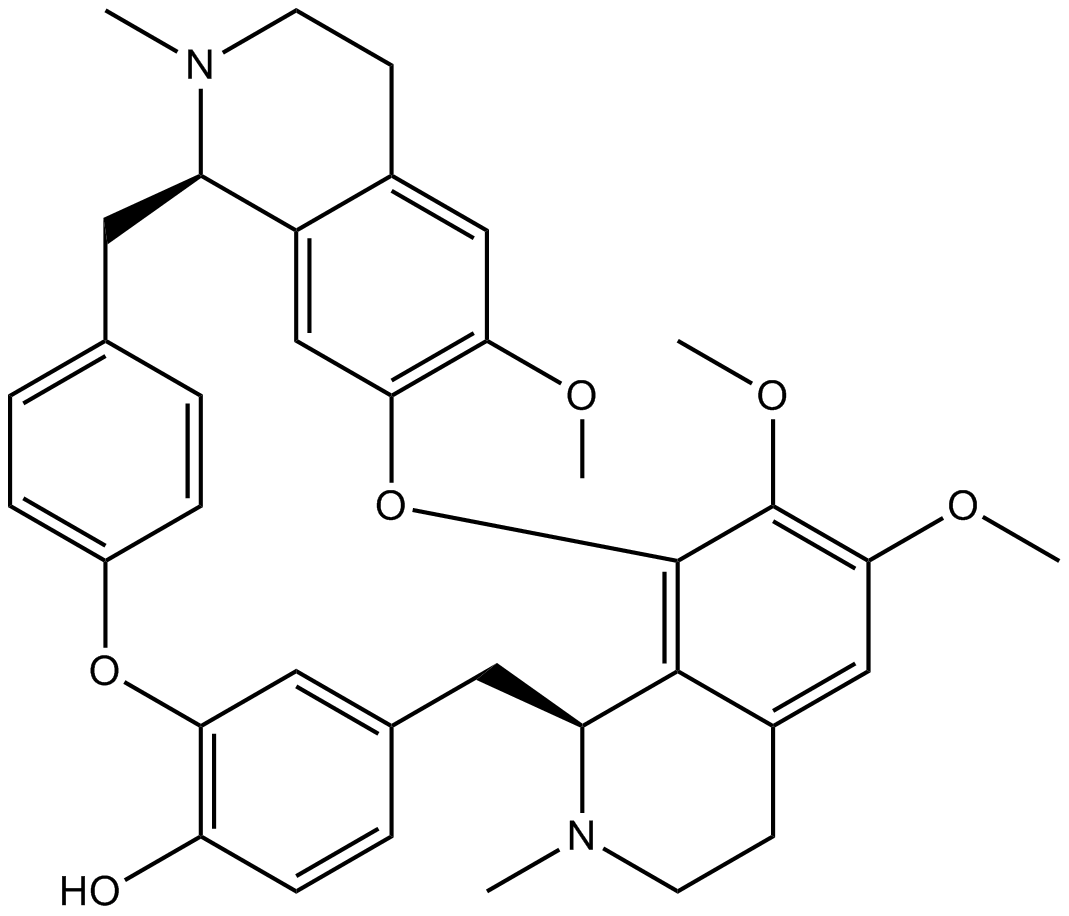
-
GN10358
Berbamine hydrochloride
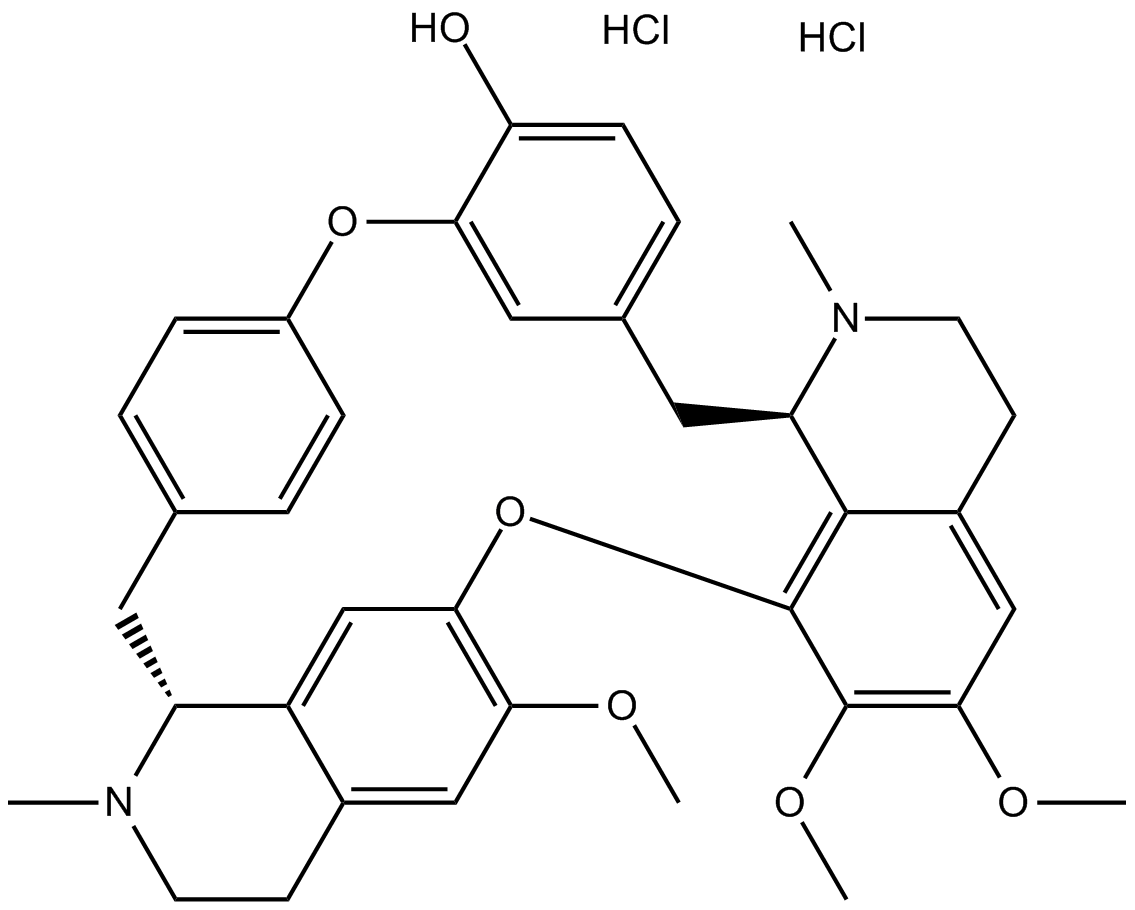
-
GN10221
Berberine
Berberine (Natural Yellow 18) is an alkaloid isolated from the Chinese herbal medicine Huanglian, as an antibiotic. Berberine (Natural Yellow 18) induces reactive oxygen species (ROS) generation and inhibits DNA topoisomerase.
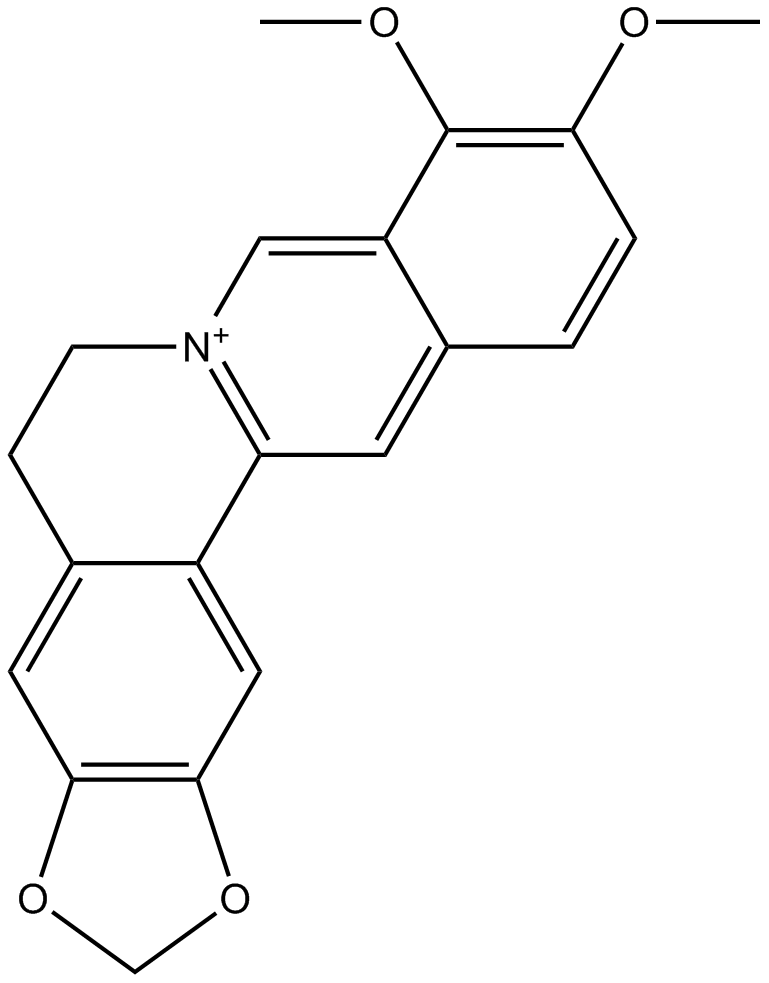
-
GC35497
Berberine chloride hydrate
Berberine chloride hydrate (Natural Yellow 18 chloride hydrate) is an alkaloid that acts as an antibiotic. Berberine chloride hydrate induces reactive oxygen species (ROS) generation and inhibits DNA topoisomerase. Antineoplastic properties.
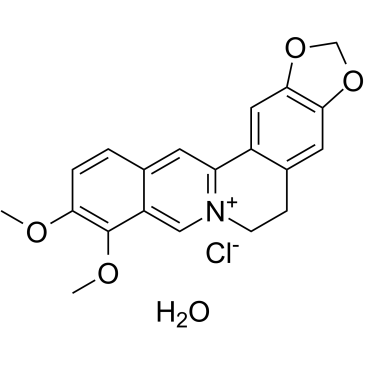
-
GN10208
Berberine hydrochloride
Berberine hydrochloride is an isoquinoline alkaloid derived from the Ranunculaceae medicinal plant Coptis chinensis. It has various pharmacological activities such as anti-tumor, anti-inflammatory, and hypoglycemic activities.
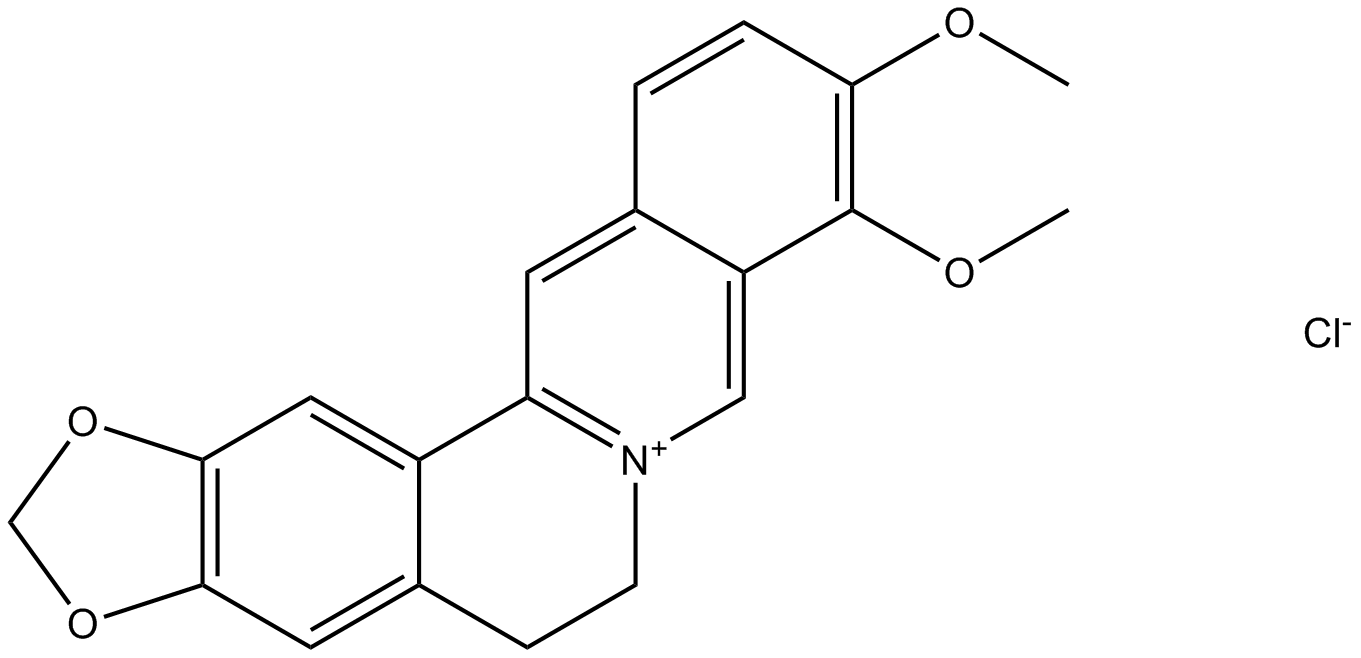
-
GN10523
Berberine Sulfate
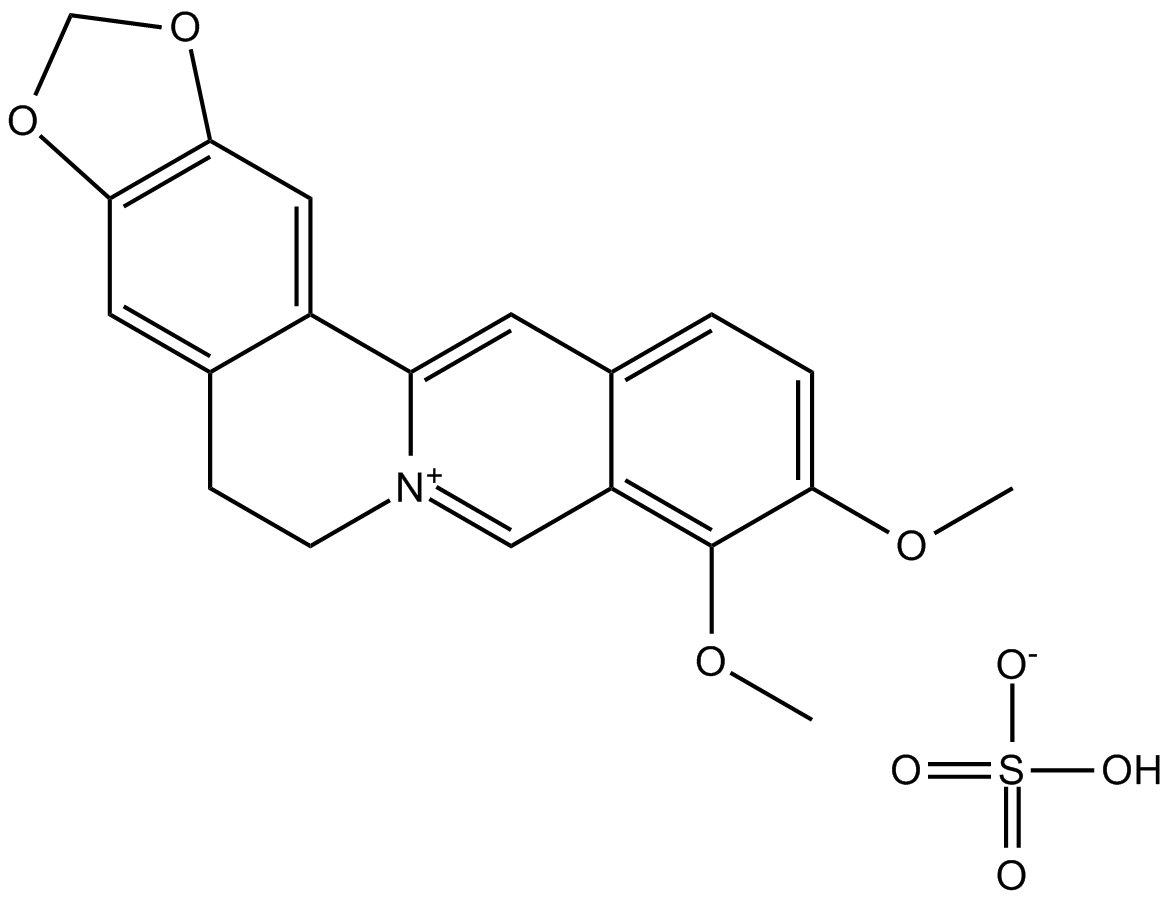
-
GN10539
Bergenin

-
GC10734
Beta-Lapachone
Beta-Lapachone (ARQ-501;NSC-26326) is a naturally occurring O-naphthoquinone, acts as a topoisomerase I inhibitor, and induces apoptosis by inhibiting cell cycle progression.
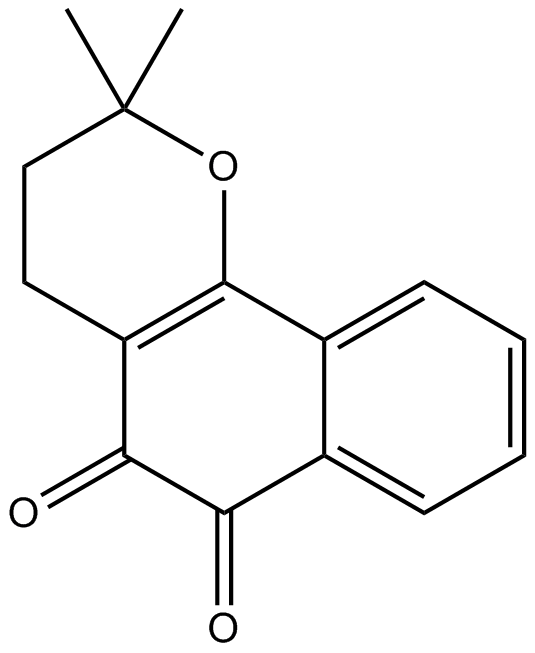
-
GC10480
Betulinic acid
A plant triterpenoid similar to bile acids
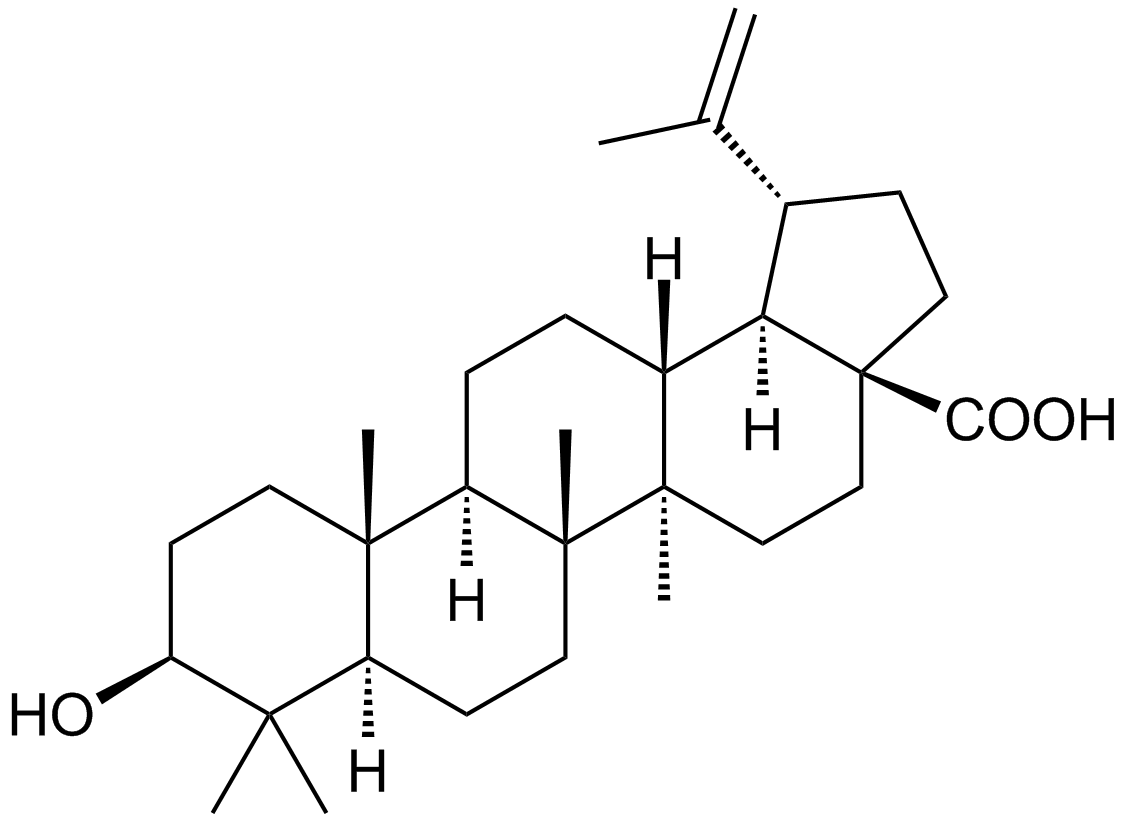
-
GC10037
Bexarotene
Retinoid Receptor agonist
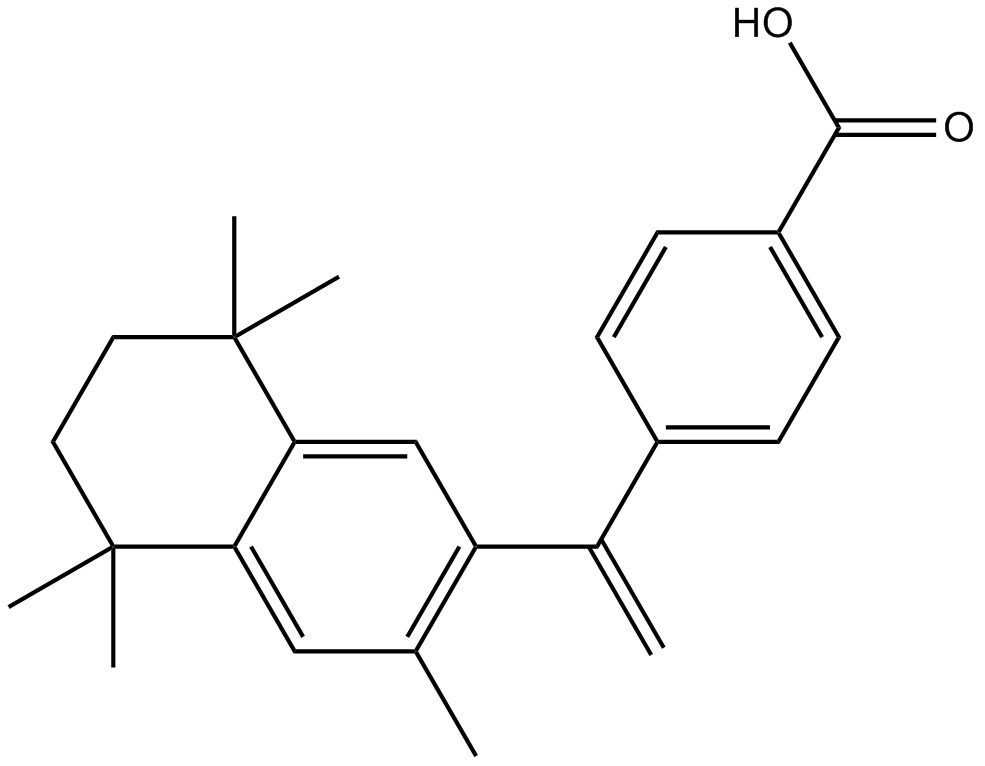
-
GC46923
Bexarotene-d4
A neuropeptide with diverse biological activities
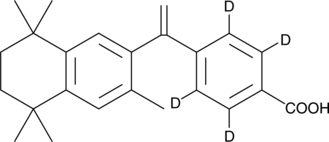
-
GC10060
BEZ235 (NVP-BEZ235)
A dual inhibitor of class I PI3Ks and mTOR
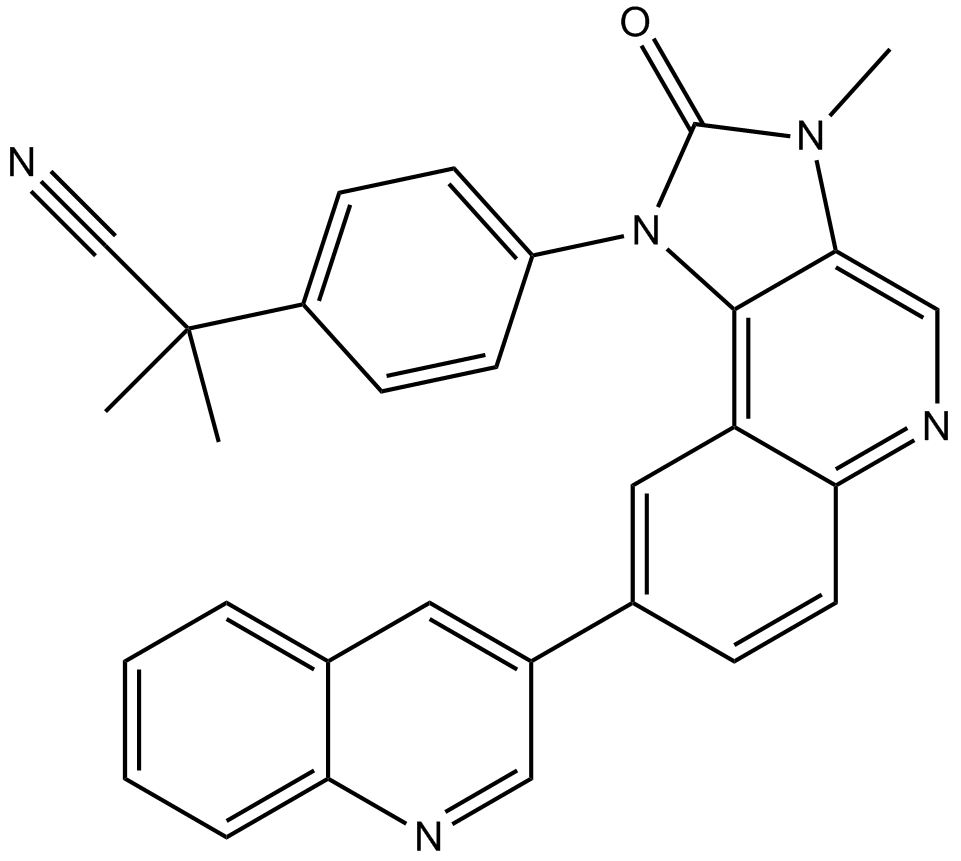
-
GC13271
BEZ235 Tosylate
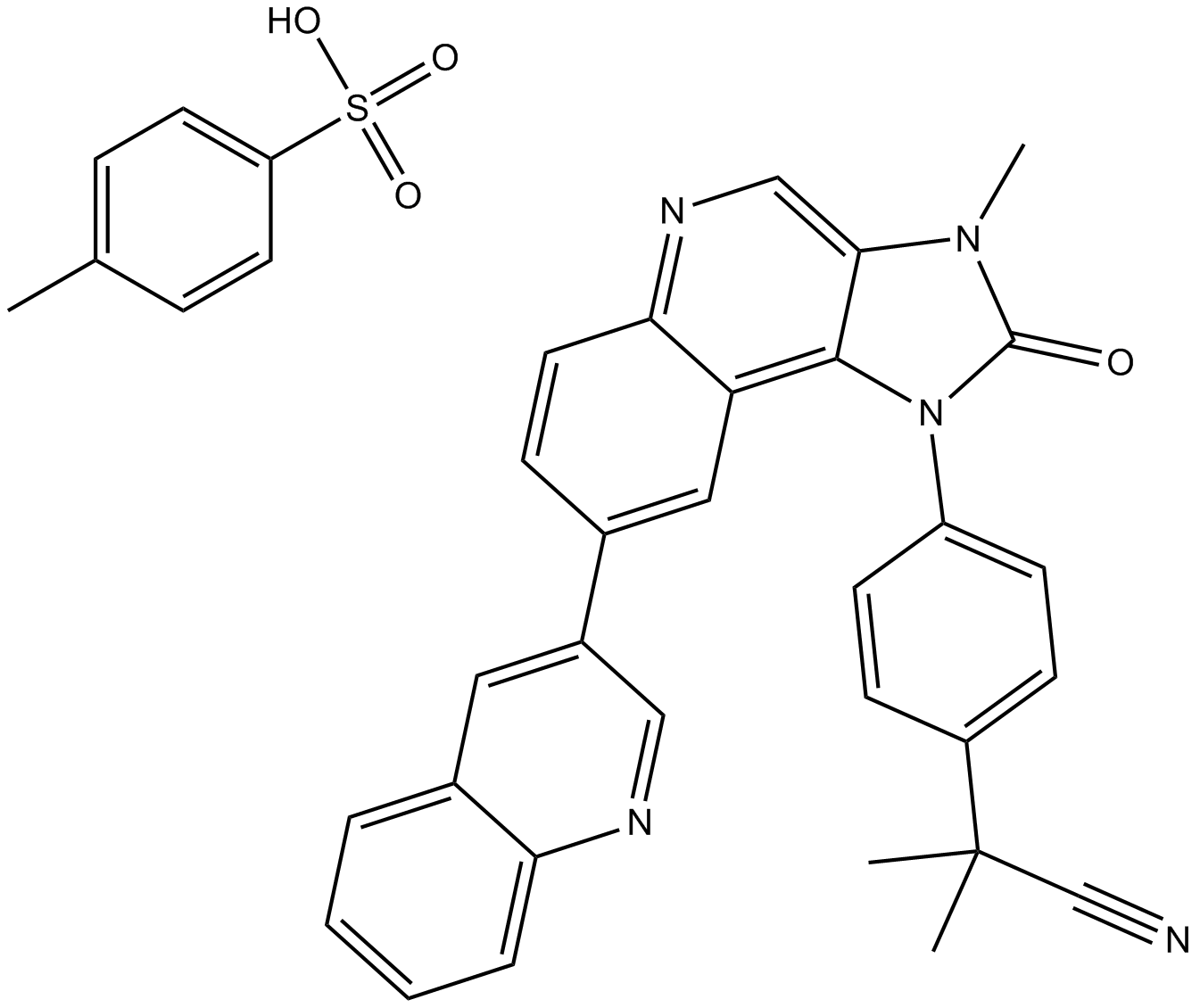
-
GC35509
BGT226
BGT226 (NVP-BGT226) is a PI3K (with IC50s of 4 nM, 63 nM and 38 nM for PI3Kα, PI3Kβ and PI3Kγ)/mTOR dual inhibitor which displays potent growth-inhibitory activity against human head and neck cancer cells.
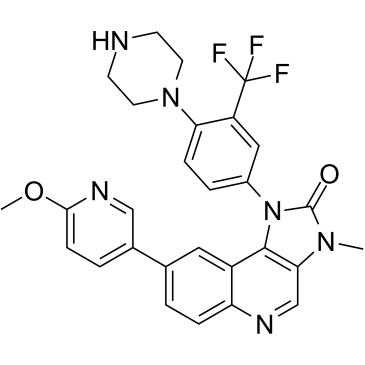
-
GC13468
BI-D1870
P90 RSK inhibitor,ATP-competitive and cell-permeable

-
GC18174
BIA 10-2474
BIA 10-2474 is an inhibitor of fatty acid amide hydrolase (FAAH; IC50 = 4.9 nM in HEK293T cells expressing the human recombinant enzyme).
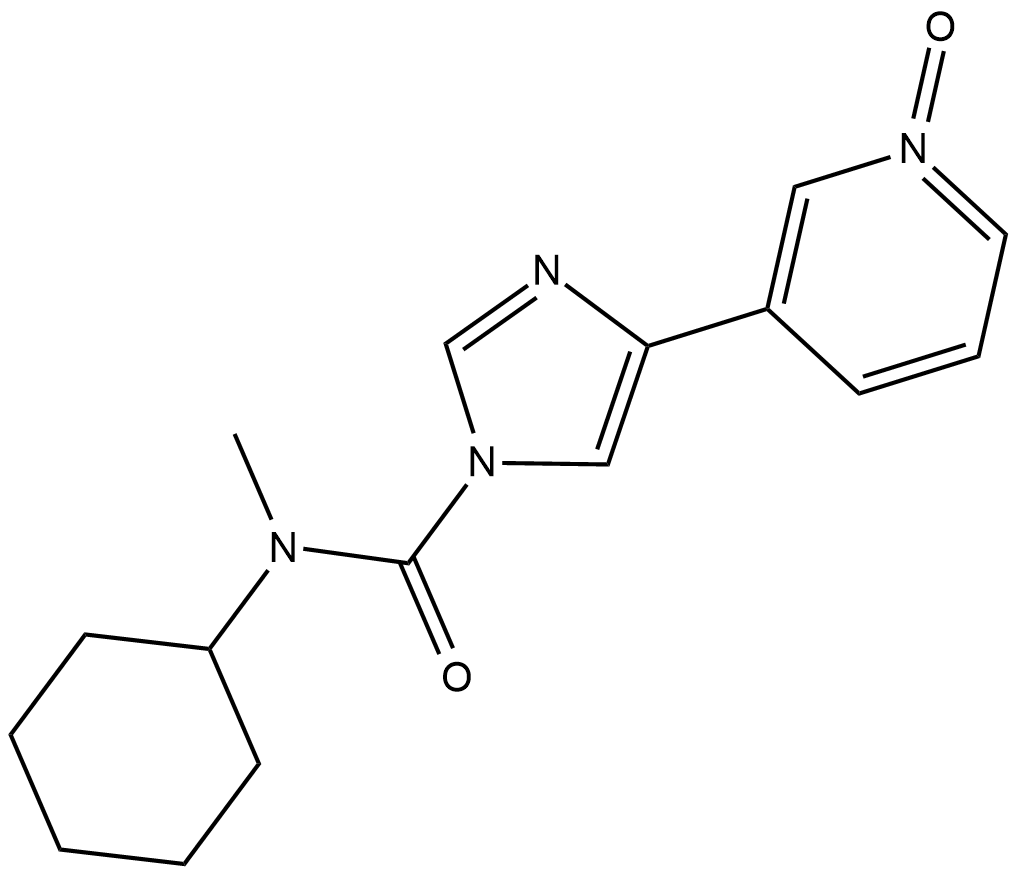
-
GC12271
Bicalutamide
Androgen receptor antagonist
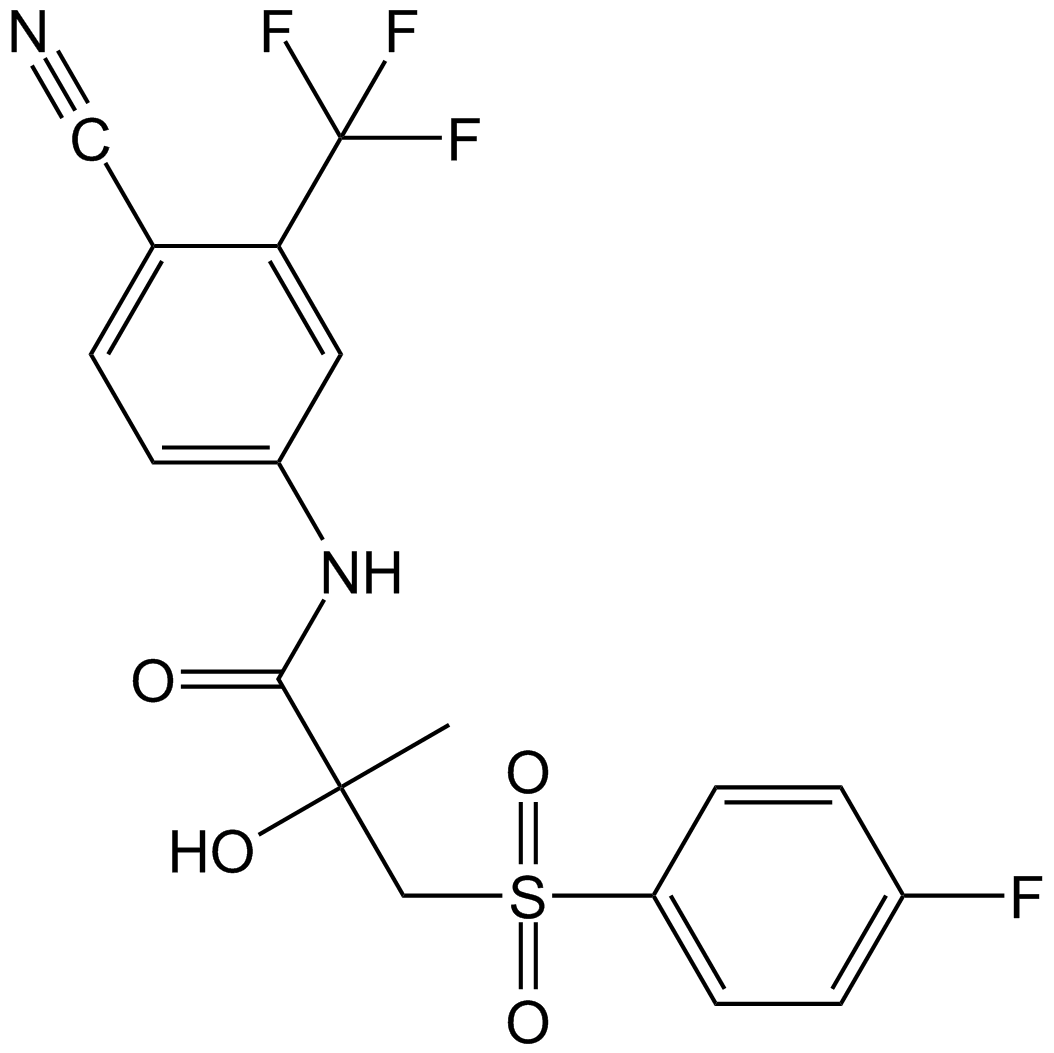
-
GC18304
Bicyclol
Bicyclol is a hepatoprotective agent.
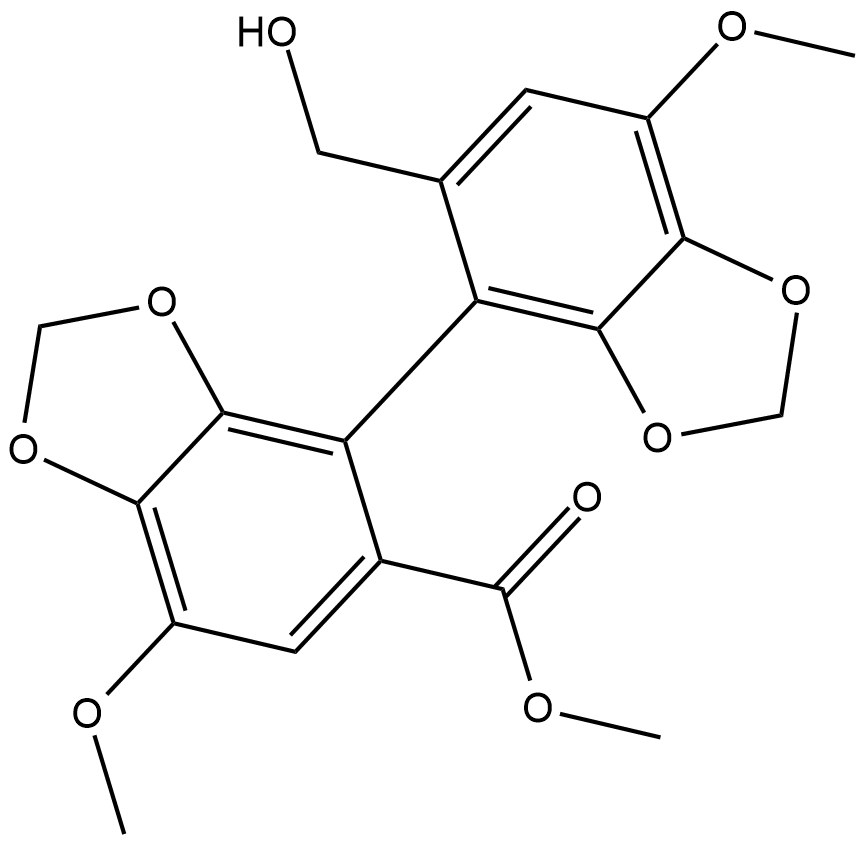
-
GC60076
Bigelovin
Bigelovin, a sesquiterpene lactone isolated from Inula helianthus-aquatica, is a selective retinoid X receptor α agonist. Bigelovin suppresses tumor growth through inducing apoptosis and autophagy via the inhibition of mTOR pathway regulated by ROS generation.
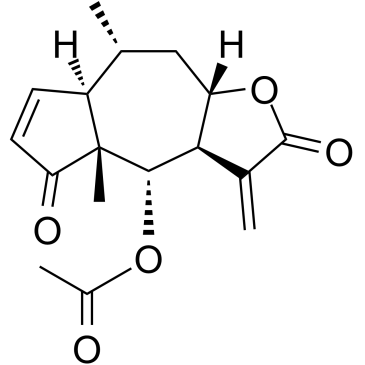
-
GC12218
BIIB021
A potent, orally-available Hsp90 inhibitor
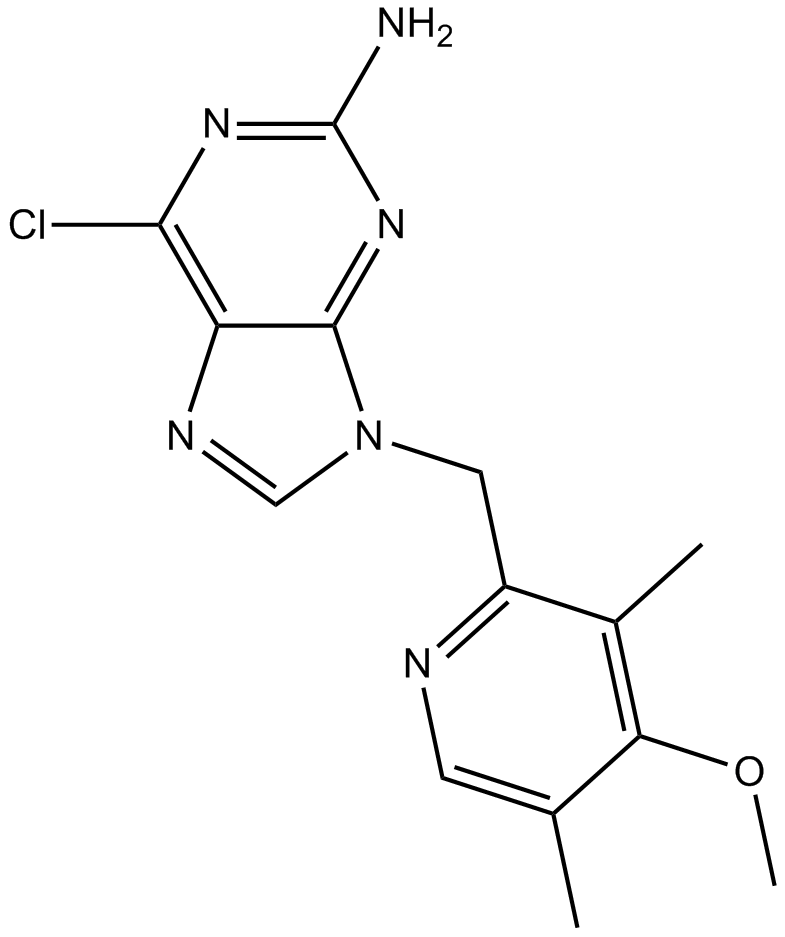
-
GC12541
Bilobalide
A neuroprotective natural product
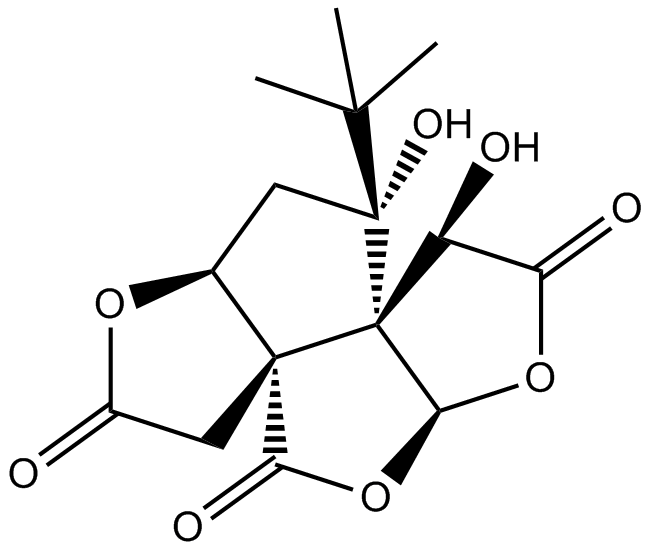
-
GN10618
Biochanin A
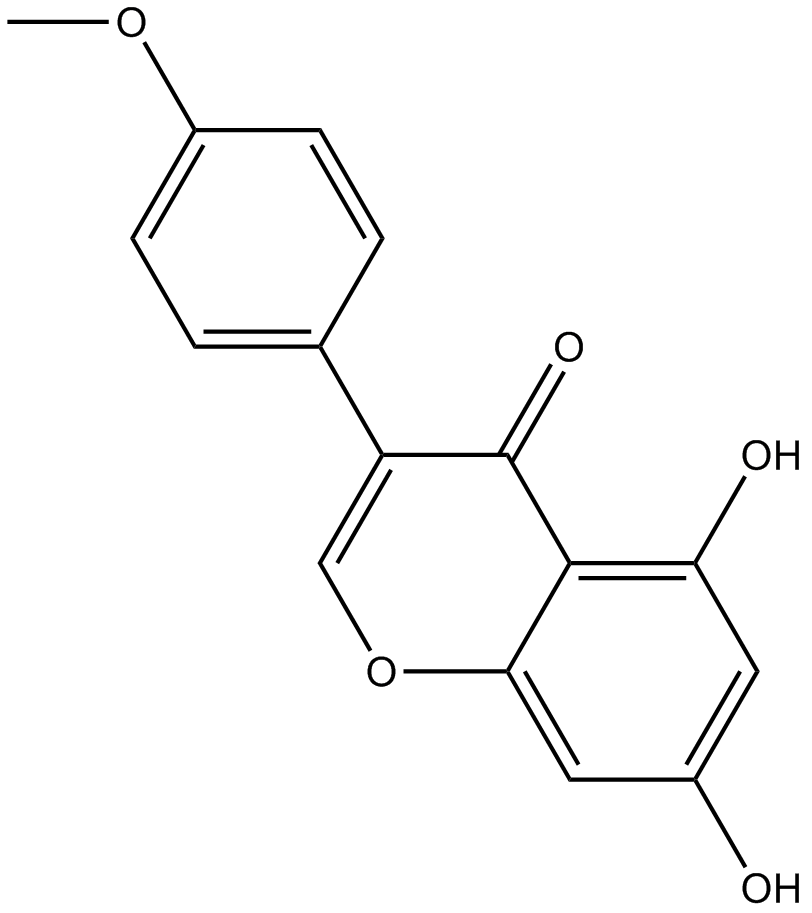
-
GC11497
BIRB 796 (Doramapimod)
BIRB 796 (Doramapimod) (BIRB 796) is an orally active, highly potent p38 MAPK inhibitor, which has an IC50 for p38α=38 nM, for p38β=65 nM, for p38γ=200 nM, and for p38δ=520 nM.
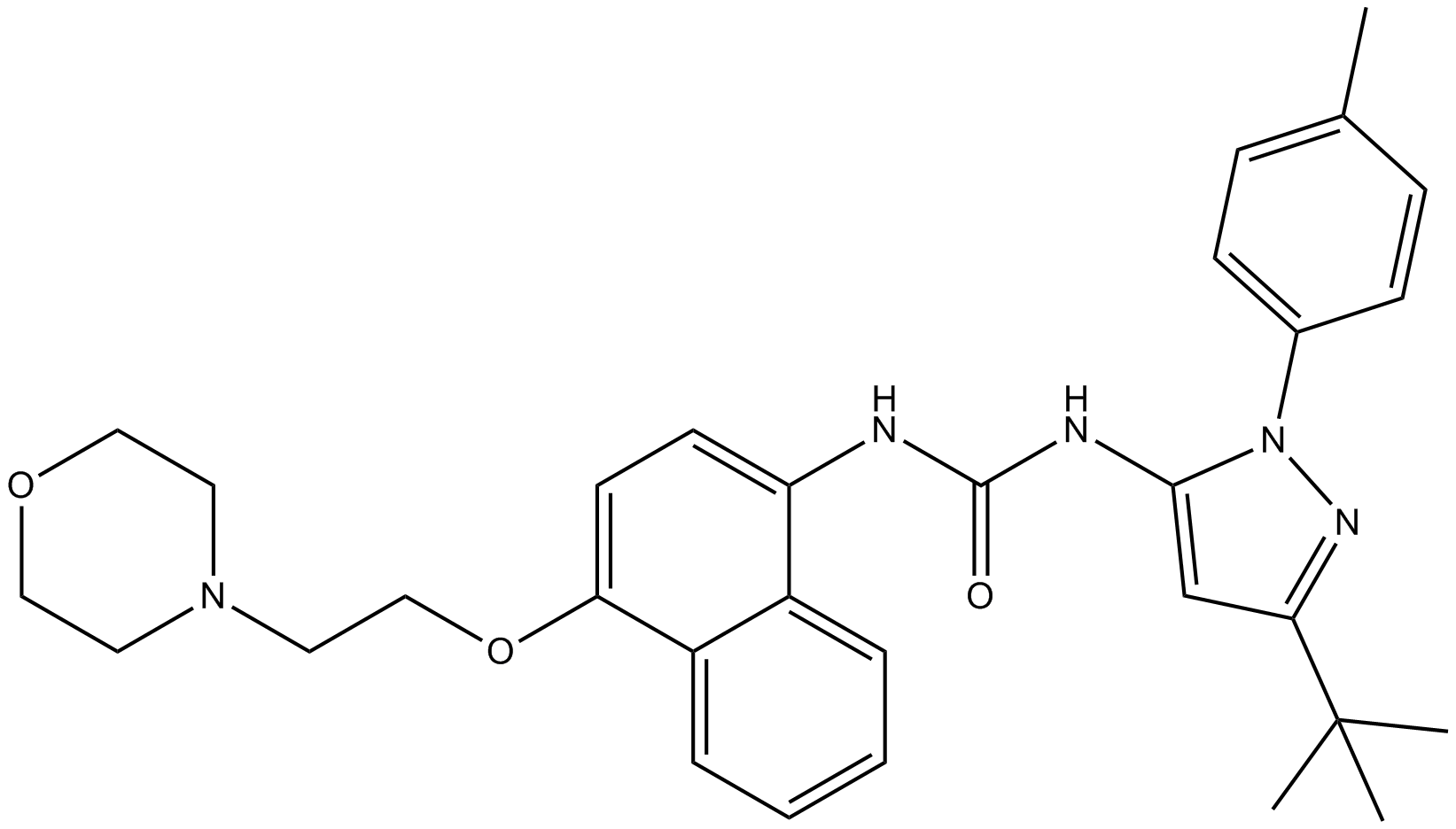
-
GN10037
Bisdemethoxycurcumin
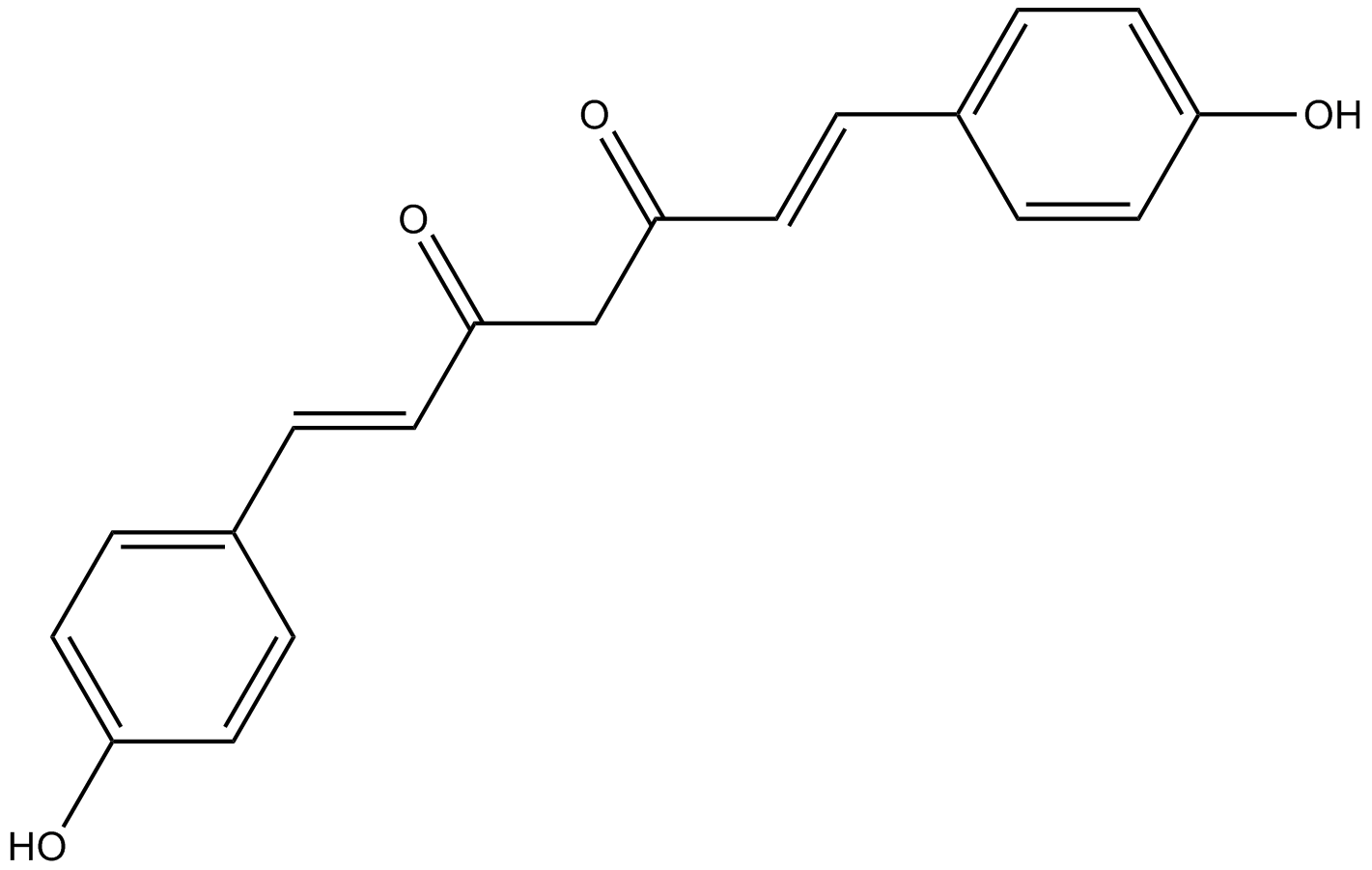
-
GC12171
BIX 01294
An inhibitor of G9a histone methyltransferase
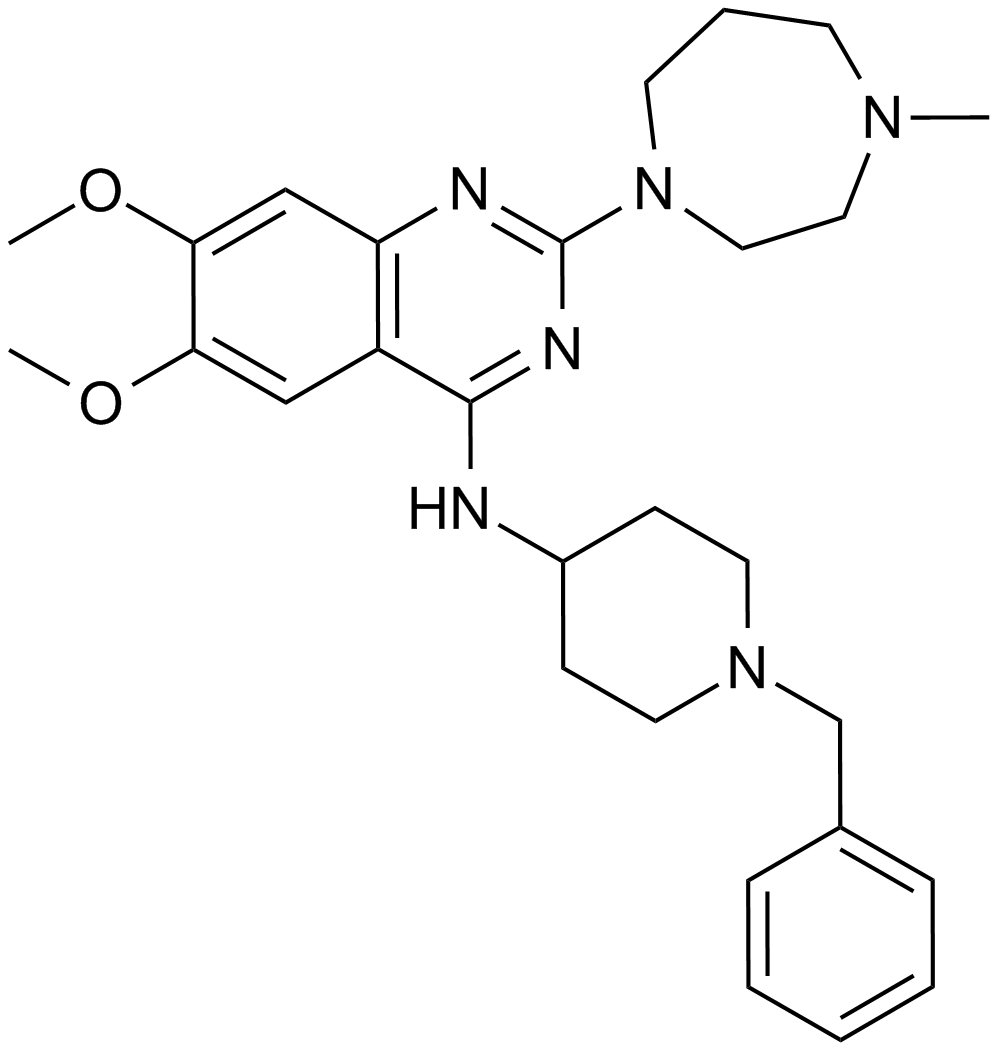
-
GC39481
BL-918
An ULK1 activator
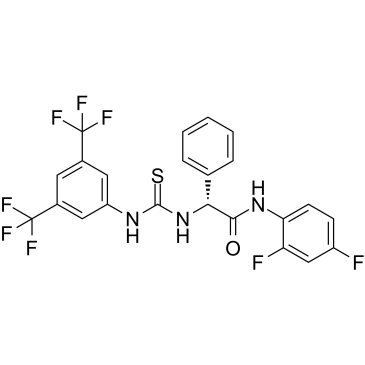
-
GC10593
BMS-582949 hydrochloride
p38 MAPK inhibitor

-
GC65318
BOLD-100
BOLD-100 is a ruthenium-based anticancer agent. BOLD-100 also is an inhibitor of stress-induced GRP78 upregulation, disrupting endoplasmic reticulum (ER) homeostasis and inducing ER stress and unfolded protein response (UPR). BOLD-100 interferes with the complex interplay between ER-stress response, lysosome dynamics, and autophagy execution.

-
GC17644
Bortezomib (PS-341)
Bortezomib (PS-341), as a dipeptide boronic acid proteasome inhibitor with antitumor activity, can potently inhibiit 20S proteasome with Ki of 0.6 nM by targeting a threonine residue..
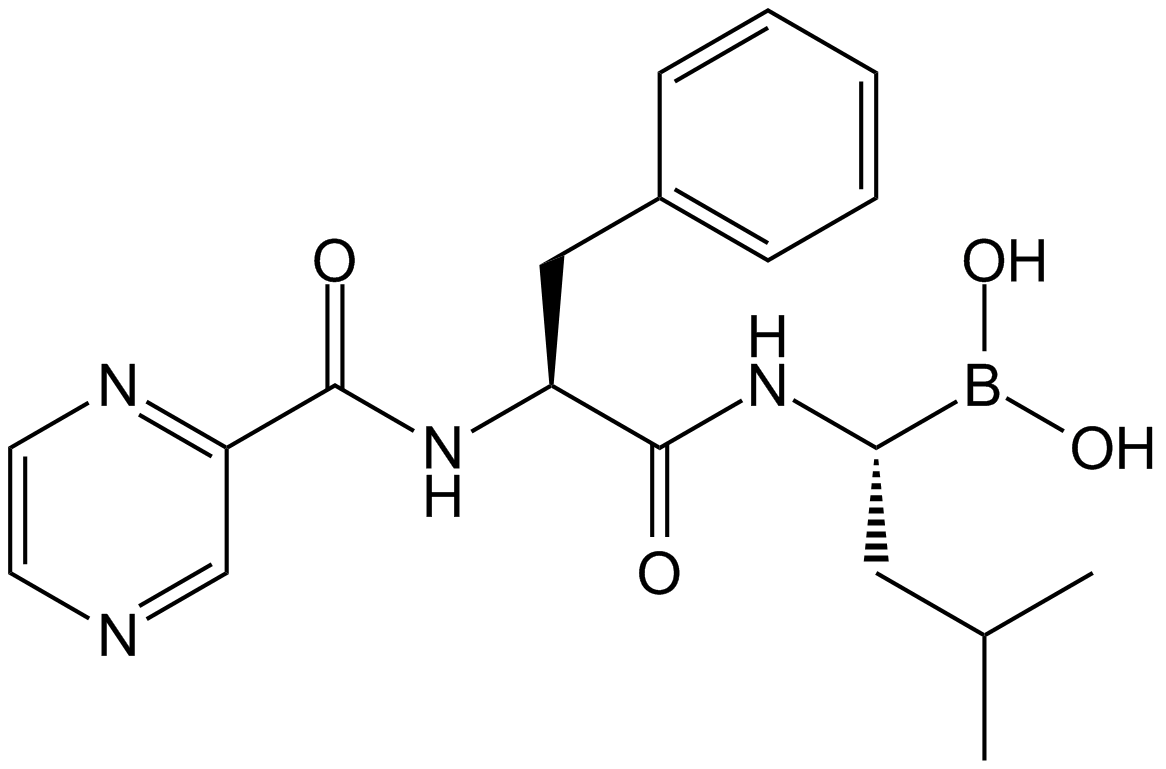
-
GC65010
Bortezomib-d8
Bortezomib-d8 (PS-341-d8) is the deuterium labeled Bortezomib. Bortezomib (PS-341) is a reversible and selective proteasome inhibitor, and potently inhibits 20S proteasome (Ki=0.6 nM) by targeting a threonine residue. Bortezomib disrupts the cell cycle, induces apoptosis, and inhibits NF-κB. Bortezomib is the first proteasome inhibitor anticancer agent. Anti-cancer activity.
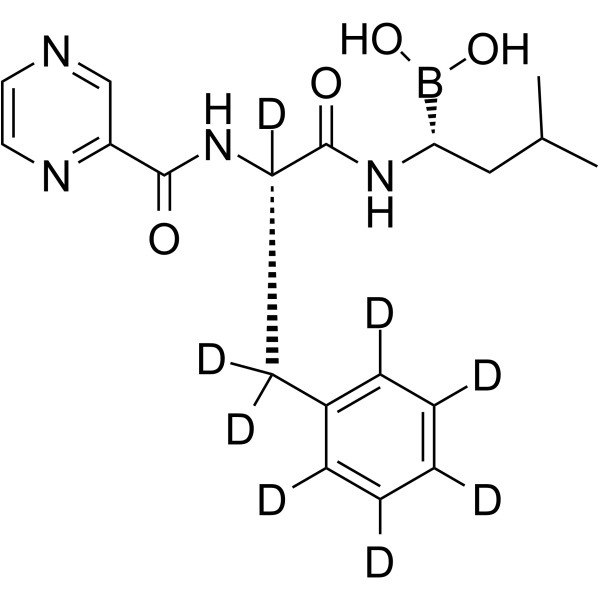
-
GC13343
Bosutinib (SKI-606)
Bosutinib (SKI-606) is an oral Src/Abl tyrosine kinase inhibito with IC50 of 1.2 nM and 1 nM, respectively.
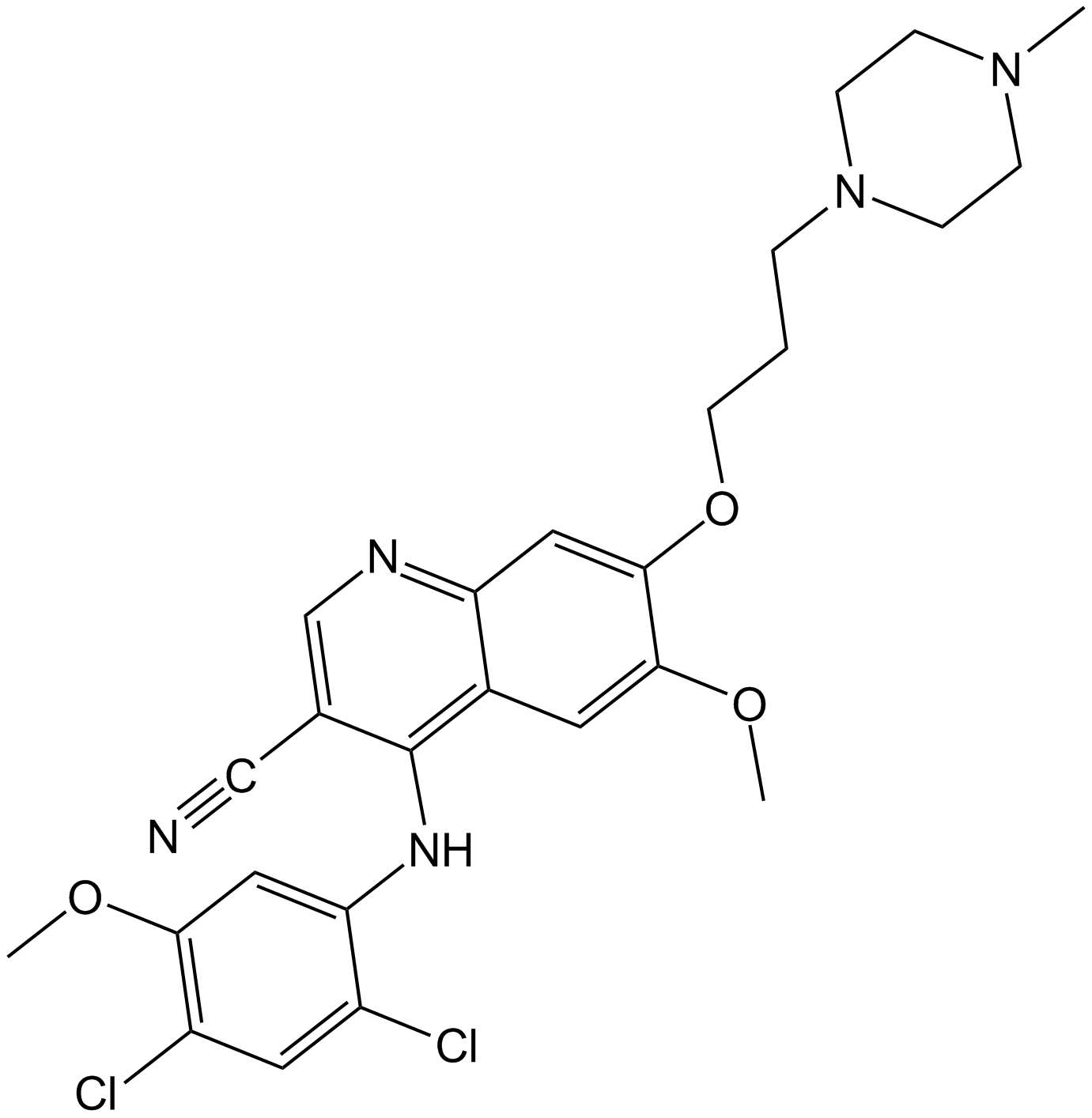
-
GC40080
Bosutinib-d8
Bosutinib-d8 is intended for use as an internal standard for the quantification of bosutinib by GC- or LC-MS.
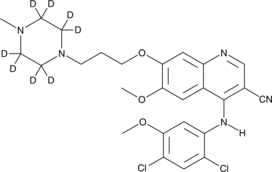
-
GC30537
BPO-27 racemate
BPO-27 racemate is a potent CFTR inhibitor with an IC50 of 8 nM.
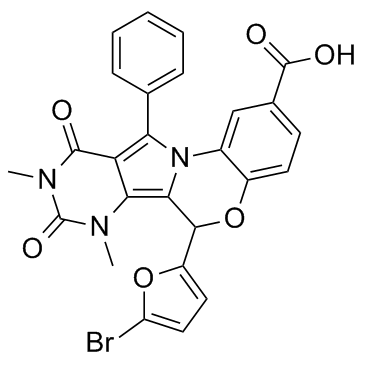
-
GN10802
Brazilin
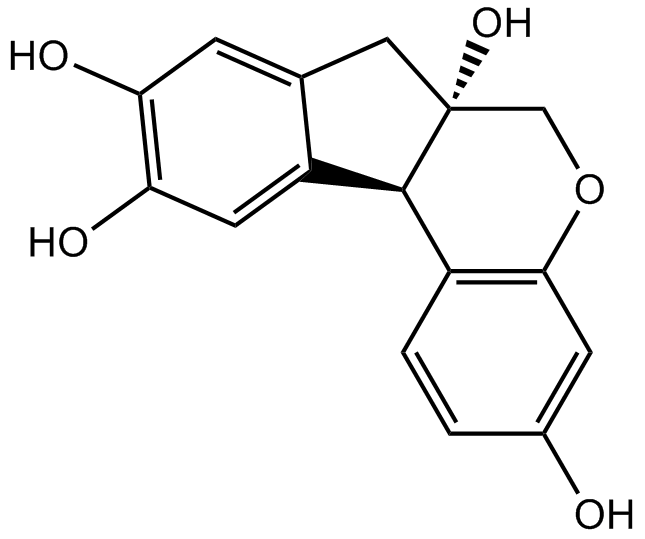
-
GC17683
Brefeldin A
Brefeldin A (BFA) is a fungal macrocyclic lactone and a potent, reversible inhibitor of intracellular vesicle formation and protein trafficking between the endoplasmic reticulum (ER) and the Golgi apparatus.
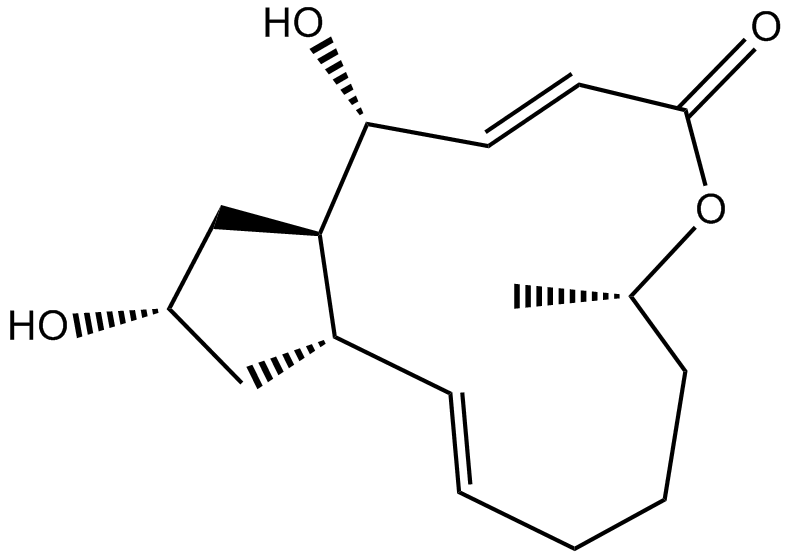
-
GC35554
Brevilin A
A sesquiterpene lactone with anticancer activity

-
GC19083
Briciclib
Briciclib is a water soluble derivative of ON 013100, and has the potential in targeting eIF4E for solid cancers.
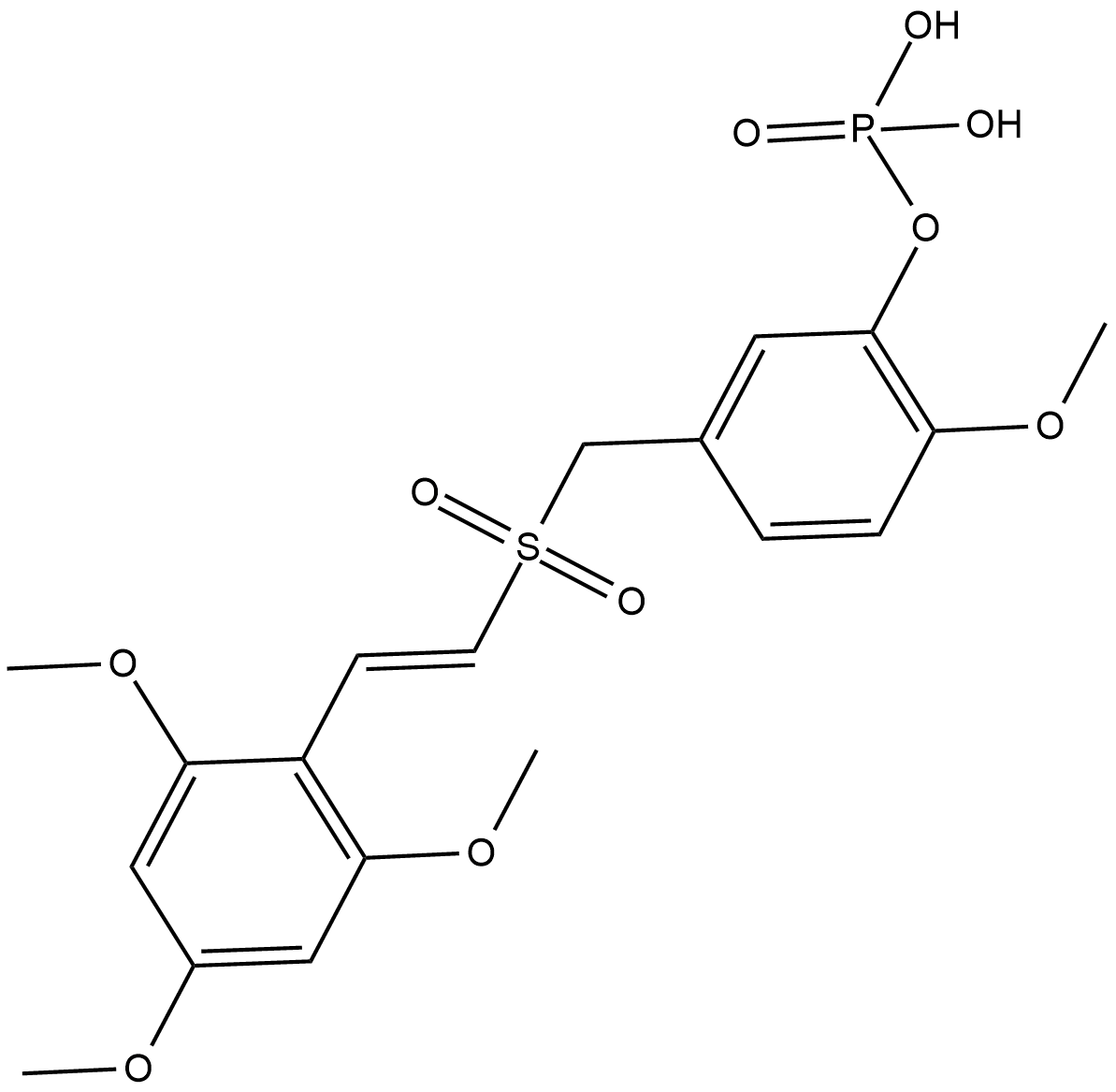
-
GC35555
Britannin
Britannin, isolated from Inula aucheriana, is a sesquiterpene lactone.
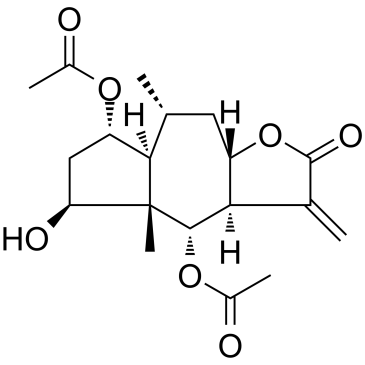
-
GC11692
Brivanib (BMS-540215)
Brivanib (BMS-540215) (BMS-540215) is an ATP-competitive inhibitor against VEGFR2 with an IC50 of 25 nM, and has moderate potency against VEGFR-1 and FGFR-1, but >240-fold against PDGFR-β.
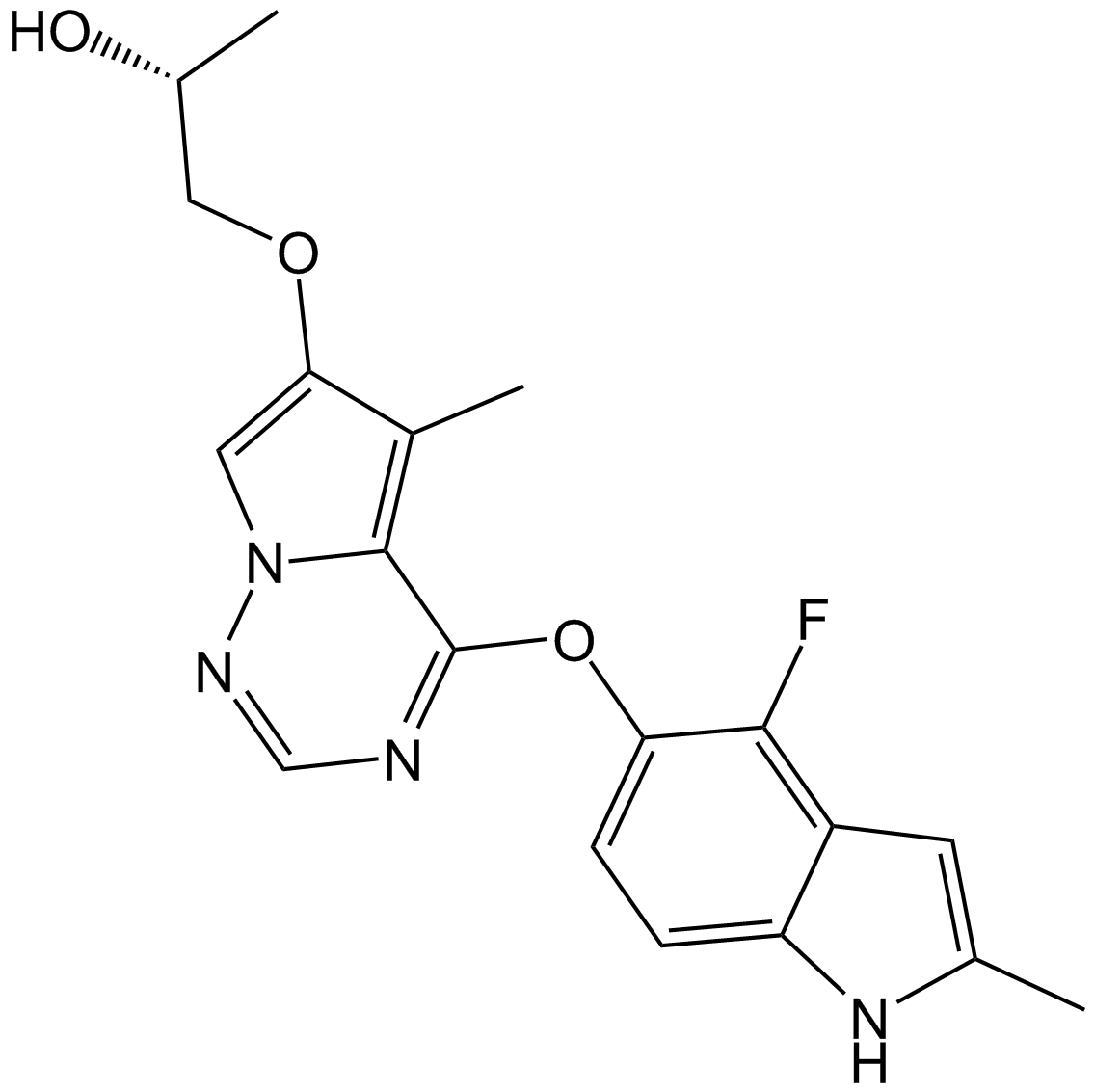
-
GC14238
Brivanib Alaninate (BMS-582664)
Brivanib alaninate (BMS-582664) is an ATP-competitive inhibitor against VEGFR2 with an IC50 of 25 nM; has moderate potency against VEGFR-1 and FGFR-1, but more than 240-fold against PDGFRβ.
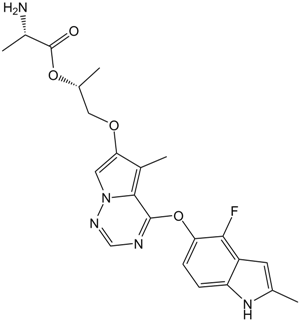
-
GC16921
Bromhexine HCl
Bromhexine HCl is a potent and specific TMPRSS2 protease inhibitor with an IC50 of 0.75 μM.
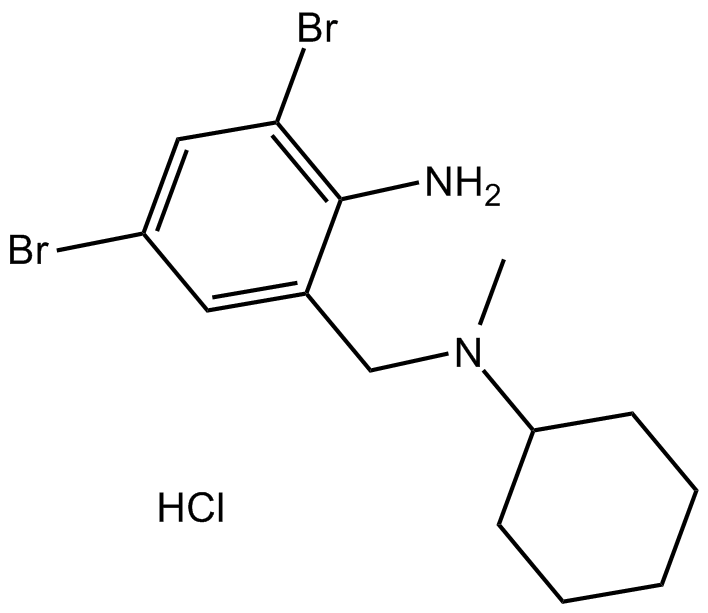
-
GC13931
Bromocriptine mesylate
D2-like dopamine receptor agonist
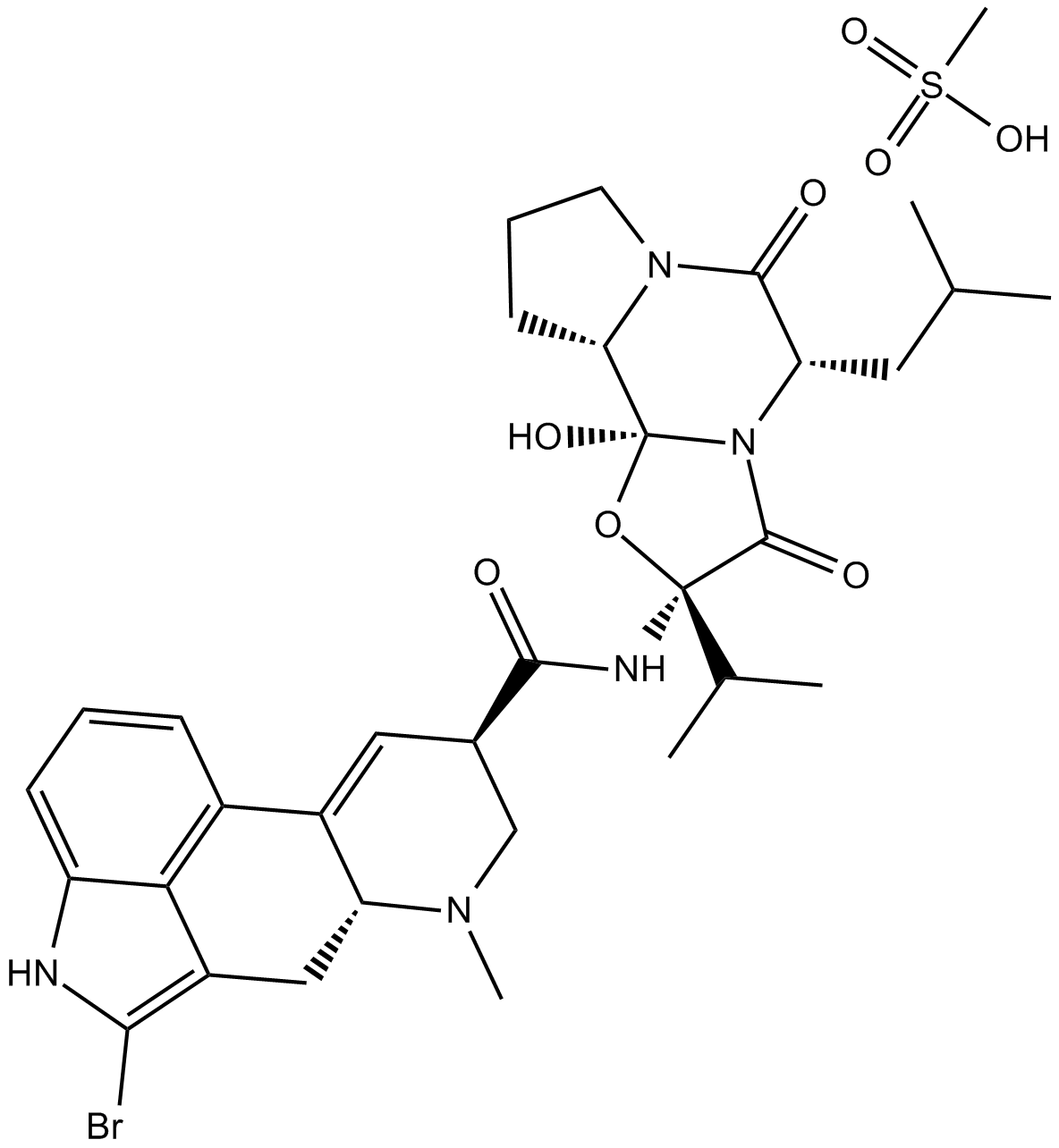
-
GC16531
Bromodomain Inhibitor, (+)-JQ1
A selective inhibitor of BET bromodomains
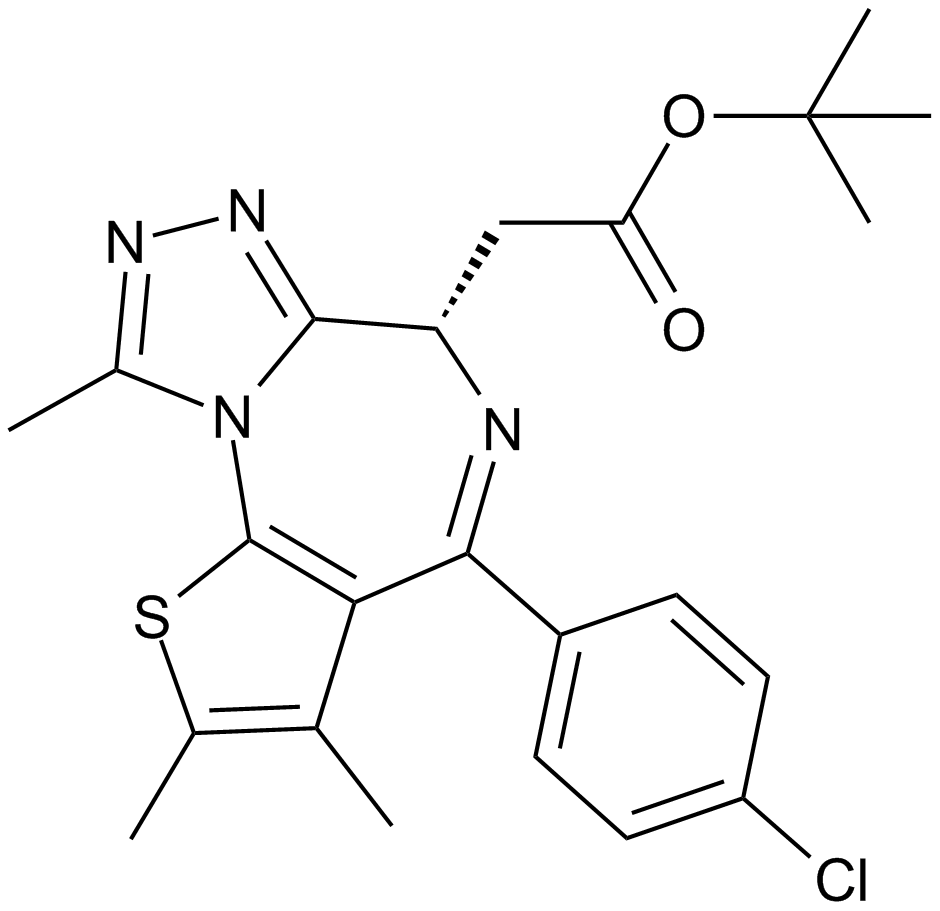
-
GC10944
Butein
Protein kinase inhibitor
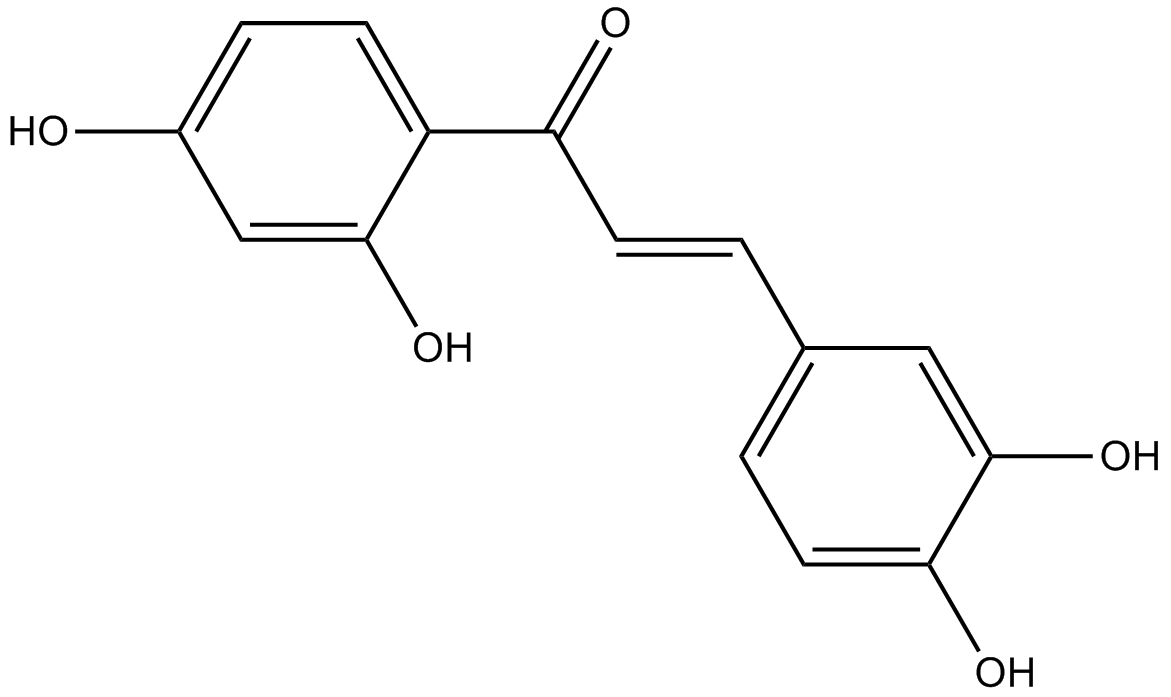
-
GC43048
C18 dihydro Ceramide (d18:0/18:0)
A bioactive sphingolipid

-
GC45616
C6 Urea Ceramide
An inhibitor of neutral ceramidase

-
GC12733
C646
C646, a potent and selective p300/CBP histone acetyltransferase inhibitor (Ki 400 nM), has been shown to have pleiotropic activity, including neuroprotective, anti-cancer and anti-epithelial-mesenchymal transition (anti-EMT) effects..
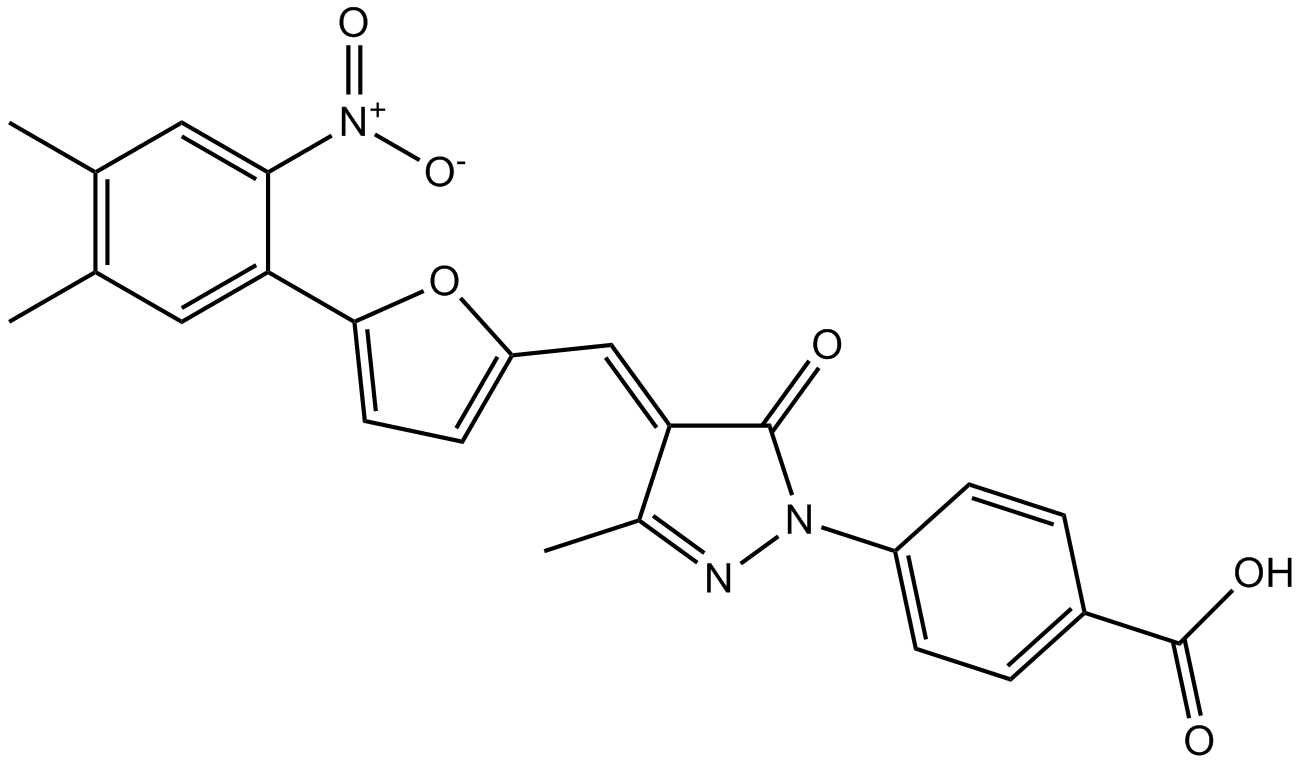
-
GC43105
C8 Ceramide (d18:1.8:0)
C8 Ceramide (d18:1.8:0) (N-Octanoyl-D-erythro-sphingosine) is a cell-permeable analog of naturally occurring ceramides.
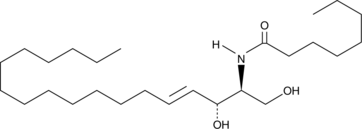
-
GC33218
CA-5f
A potent late-stage macroautophagy/autophagy inhibitor
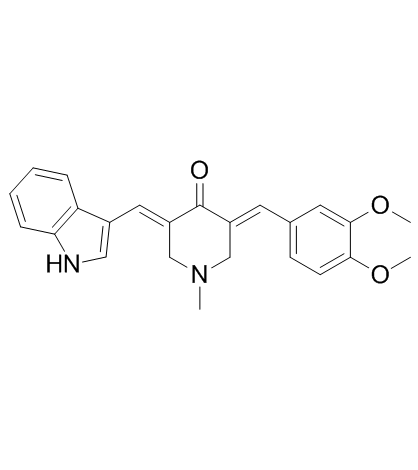
-
GC62881
CA77.1
CA77.1 is a potent, brain-penetrant and orally active chaperone-mediated autophagy (CMA) activator with favorable pharmacokinetics.
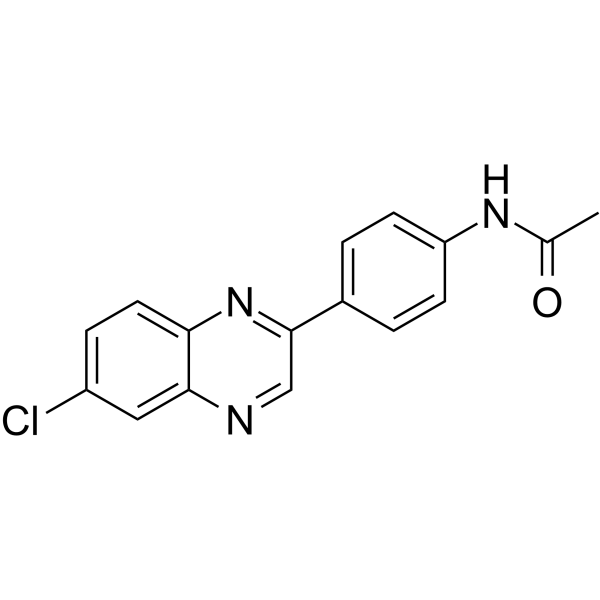
-
GC11765
Cabazitaxel
Microtubule associated inhibitor
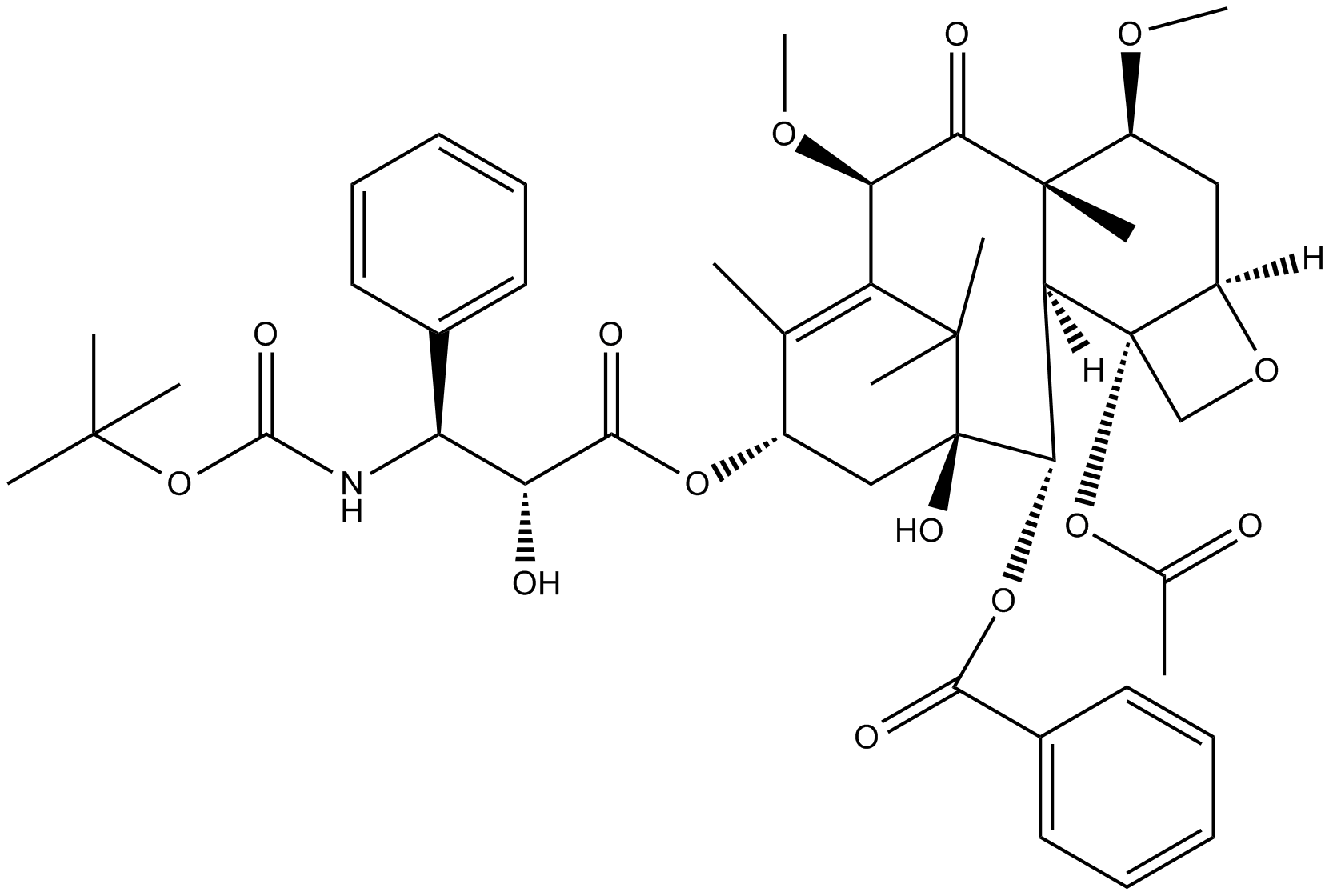
-
GC65575
Cabazitaxel-d6
Cabazitaxel-d6 (XRP6258-d6) is the deuterium labeled Cabazitaxel. Cabazitaxel is a semi-synthetic derivative of the natural taxoid 10-deacetylbaccatin III with potential antineoplastic activity.
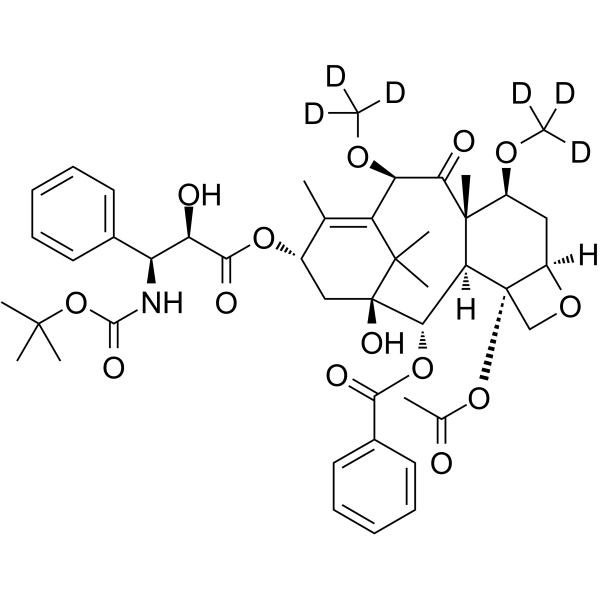
-
GC10441
Cabergoline
potent dopamine receptor agonist
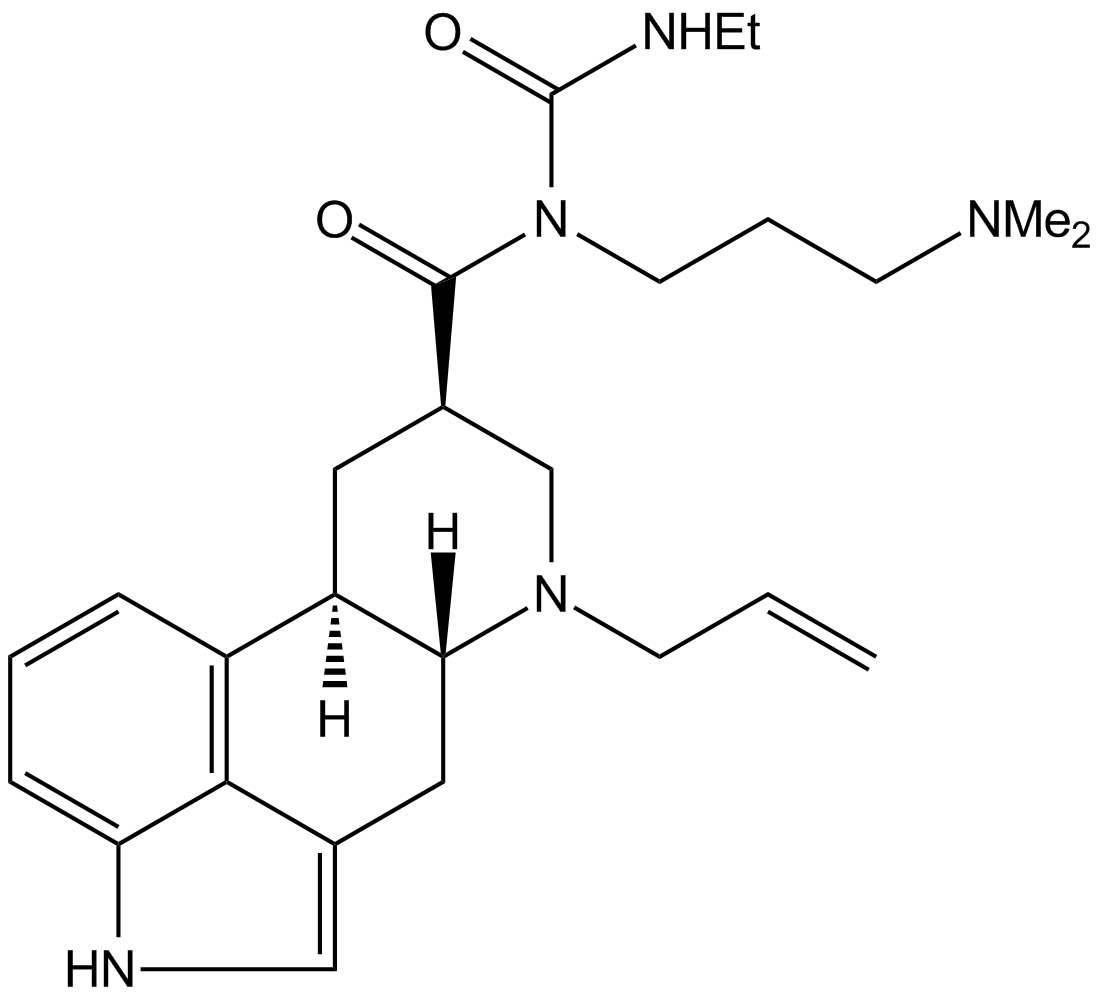
-
GC13396
CAL-101 (Idelalisib, GS-1101)
A selective PI3K p110δ inhibitor
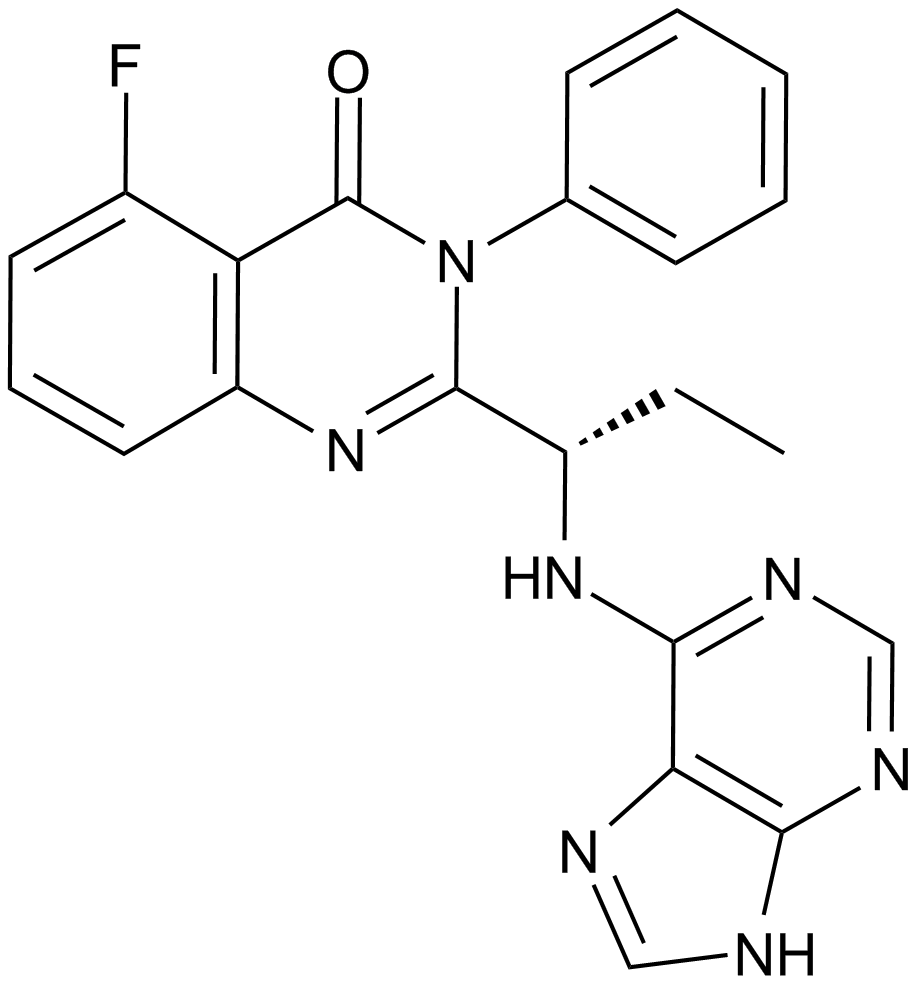
-
GC60668
Calcimycin hemimagnesium
Calcimycin (A-23187) hemimagnesium is an antibiotic and a unique divalent cation ionophore (like calcium and magnesium).
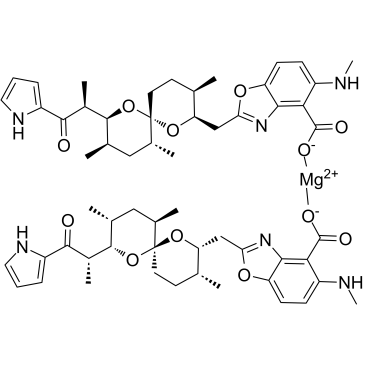
-
GC30990
Calcineurin substrate
Calcineurin substrate is a peptide from the regulatory RII subunit of cAMP-dependent protein kinase.
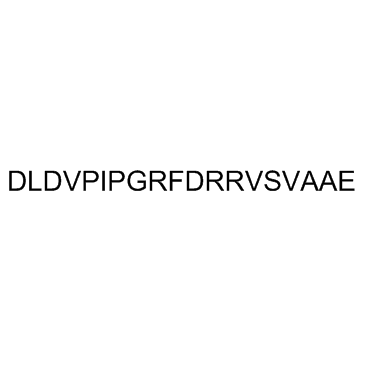
-
GC38629
Calcineurin substrate (TFA)
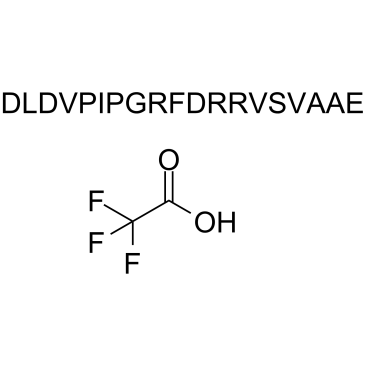
-
GC14326
Calmidazolium chloride
Calmodulin antagonist
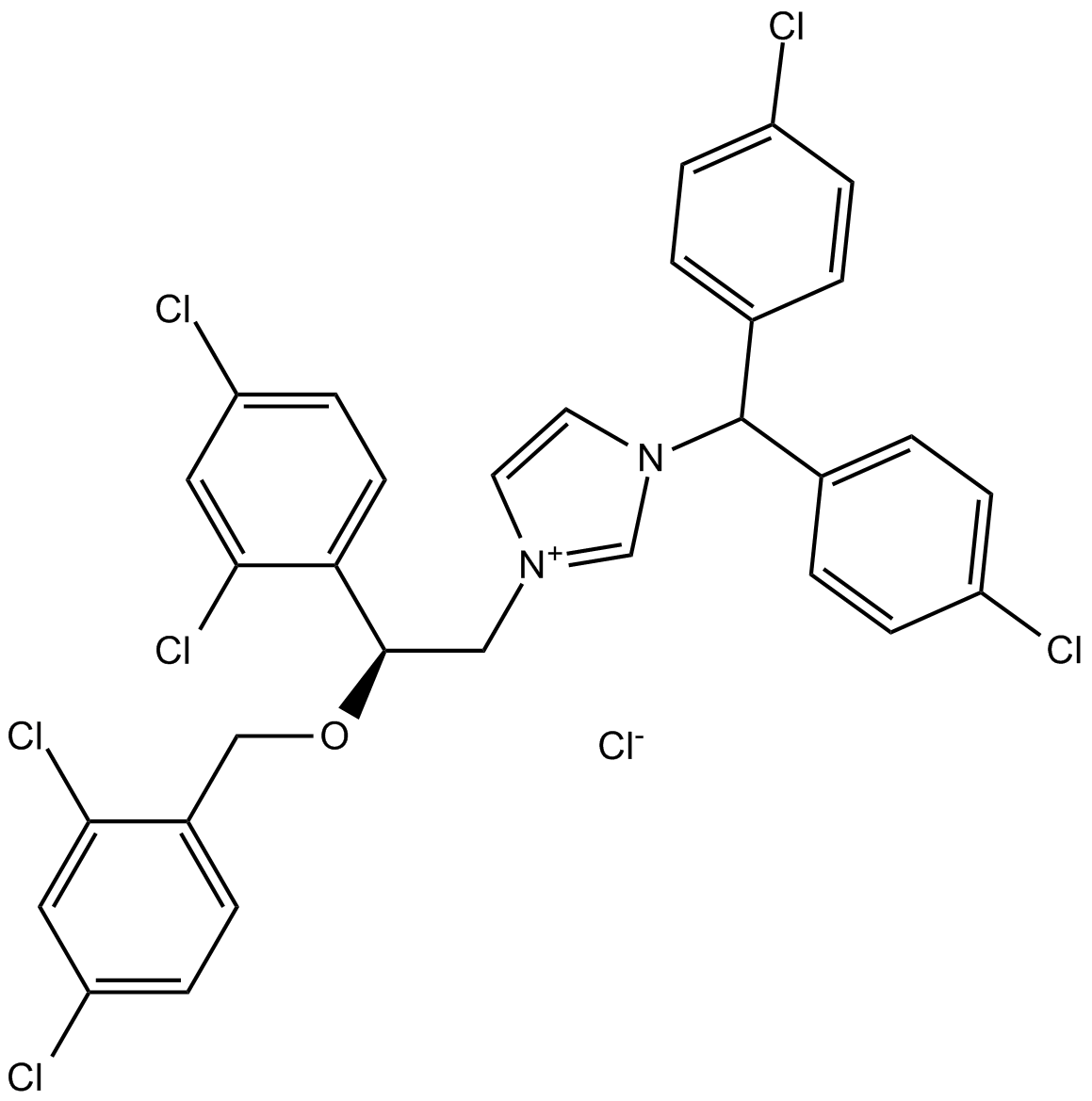
-
GC31170
Calmodulin-Dependent Protein Kinase II 290-309
Calmodulin-Dependent Protein Kinase II 290-309 is a potent CaMK antagonist with an IC50 of 52 nM for inhibition of Ca2+/calmodulin-dependent protein kinase II.
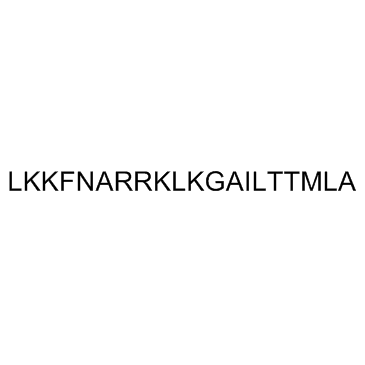
-
GC61521
Calmodulin-Dependent Protein Kinase II(290-309) acetate
Calmodulin-Dependent Protein Kinase II (290-309) acetate is a potent CaMK antagonist with an IC50 of 52 nM for inhibition of Ca2+/calmodulin-dependent protein kinase II.
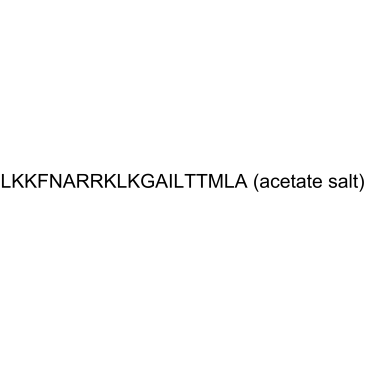
-
GC35601
CaMKII-IN-1
CaMKII-IN-1 is a potent and highly selective CaMKII inhibitor with IC50 of 63 nM; significantly high selectivity against CaMKIV, MLCK, p38a, Akt1, and PKC.
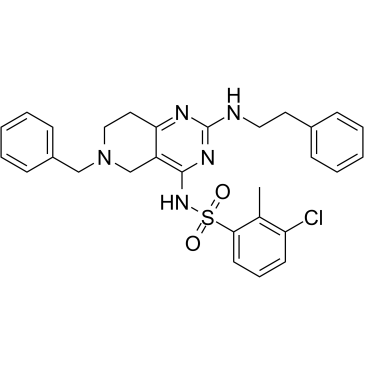
-
GC14065
Capsaicin
A terpene alkaloid with diverse biological activities
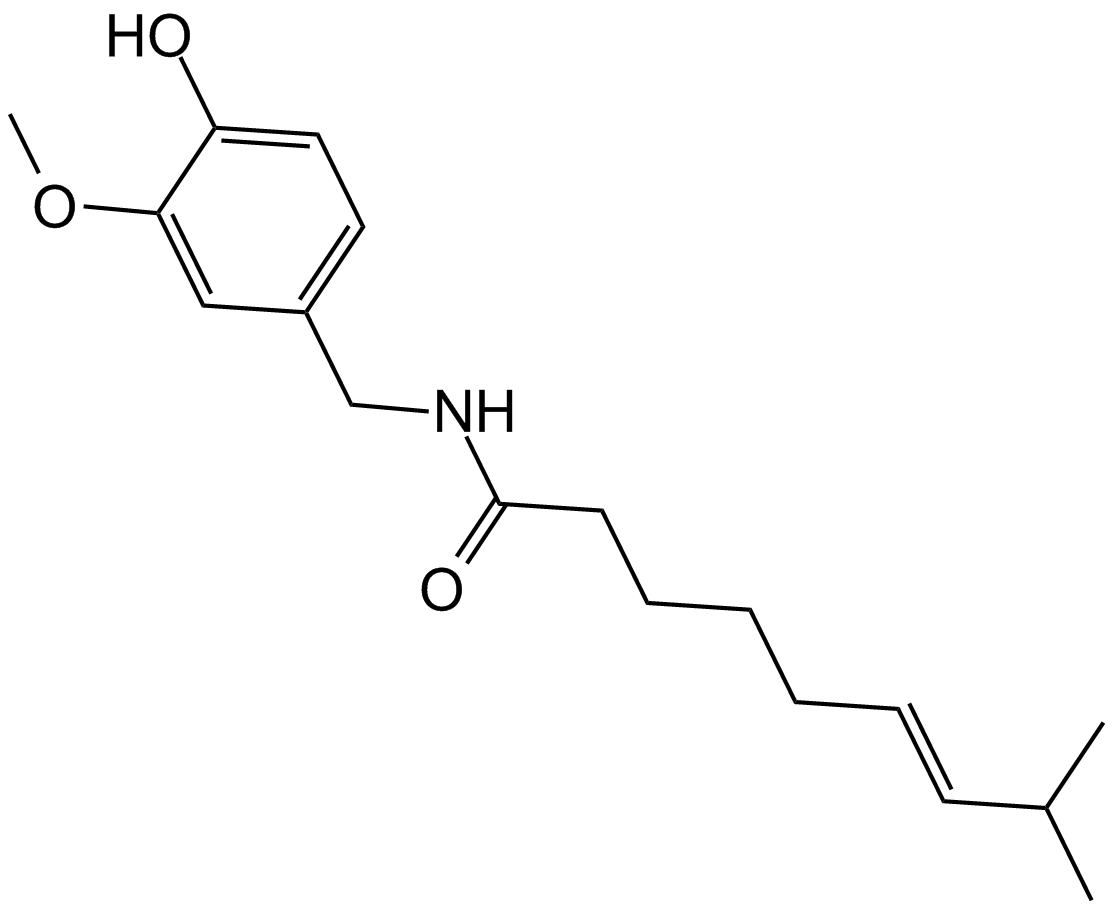
-
GC17340
Carbamazepine
Inhibitor of neuronal voltage-gated Na+ channels
